What is the Unified Lending Interface by the RBI?
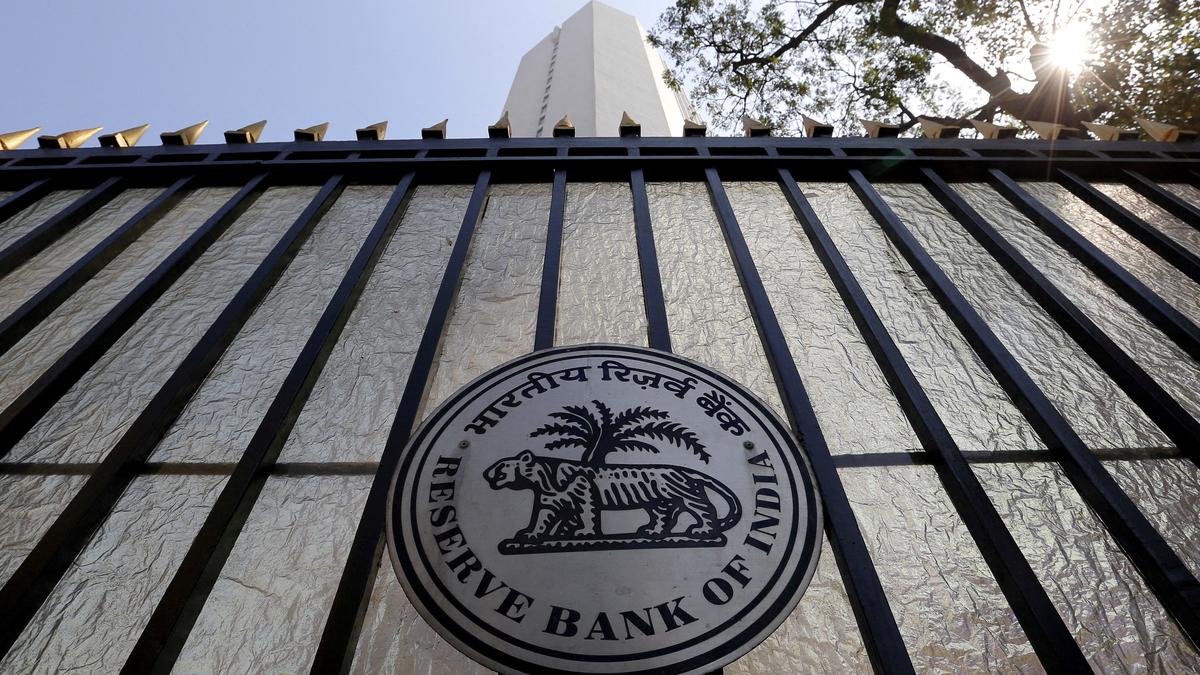
- 03 Sep 2024
In News:
The Reserve Bank of India (RBI), as part of its strategy to create digital public infrastructure in the country, has announced that a new technology platform called the Unified Lending Interface (ULI) would be introduced by the Reserve Bank Innovation Hub, Bengaluru which will enable friction-less credit to farmers and MSME borrowers to begin with.
What is ULI?
The ULI platform, aims to revolutionize the credit underwriting process by enabling a streamlined and consent-based transfer of both financial and non-financial data from various sources to lenders.
- Seamless Data Flow: ULI facilitates an efficient flow of digitized data, including crucial records like land titles, directly to lenders, enhancing the credit appraisal process.
- Faster Credit Appraisal: The platform is particularly beneficial for smaller and rural borrowers who may lack extensive credit histories, significantly reducing the time required for credit assessments.
- Standardized APIs: ULI employs common, standardized Application Programming Interfaces (APIs) that allow for a plug-and-play integration, simplifying the technical requirements for lenders and ensuring easy access to diverse data sources.
- Access to Diverse Data: Lenders can access a wealth of information from various databases, including government records and satellite imagery, which can provide deeper insights into potential borrowers.
- Opportunities for FinTechs: The platform also opens up opportunities for FinTech companies by connecting them with multiple lenders, thereby enhancing their ability to deliver tailored financial solutions.
ULI aims to create a more inclusive and efficient lending ecosystem, ultimately improving access to credit for a wider range of borrowers.
How will it work?
The ULI platform transforms the loan application process, especially for first-time borrowers and those without traditional credit histories. Here’s how it works:
- Centralized Data Access: ULI acts as a single point of access for lenders to retrieve crucial economic data about loan applicants. This reduces the need for applicants to gather extensive documentation themselves.
- Plug-and-Play Integration: Financial institutions can easily connect to the ULI platform through standardized APIs, allowing them to quickly access various data sources relevant to the borrower’s financial history and status.
- Automated Data Retrieval: Instead of borrowers spending weeks collecting documents, lenders can automatically fetch necessary information from the platform. For instance, data for a dairy farmer may include:
- Cash Flow Information: Sourced from local milk cooperatives.
- Land Ownership: Verified through state land records.
- Financial Insights: Derived from the farmer’s historical farming patterns.
- Enhanced Visibility: This comprehensive data access turns what were previously blind spots for lenders into clear insights, allowing them to assess applicants more accurately.
- Rapid Decision-Making: With immediate access to essential data, lenders can quickly determine the borrower’s income and creditworthiness. This streamlines decision-making, enabling loans to be sanctioned and disbursed within minutes.
- Supporting Tenant Farmers: Tenant farmers, who typically struggle to obtain loans due to lack of land titles, can also benefit. ULI can facilitate loans by allowing banks to verify identity and eligibility based on the intended use of funds for agricultural inputs rather than land ownership.
In summary, ULI simplifies the loan process, making it faster and more inclusive for diverse borrowers by leveraging digital data access and automation.
How did it start?
The ULI platform, officially launched by the RBI on August 10, 2023, emerged from the need for a streamlined approach to credit appraisal in an increasingly digital landscape. Here’s how it all began:
- Identification of Need: The RBI recognized that with rapid digitalization, there was a pressing need for a centralized platform to provide access to the data necessary for credit assessments. This was essential for facilitating frictionless digital credit delivery.
- Pilot Project: To test the concept, the RBI initiated a pilot project focused on the digitalization of Kisan Credit Card (KCC) loans under ?1.6 lakh in September 2022. This pilot was launched in select districts across Madhya Pradesh, Tamil Nadu, Karnataka, Uttar Pradesh, and Maharashtra.
- Encouraging Results: The initial outcomes of the KCC pilot were promising, showcasing the potential for seamless loan disbursement. The pilot demonstrated that loans could be disbursed at the doorstep, either through assisted or self-service modes, all without the need for extensive paperwork.
- Development of ULI: Building on the success of the KCC pilot, the RBI moved forward with the establishment of the ULI platform to broaden the scope of digital credit accessibility for a wider range of borrowers.
Drone Technology in Agriculture
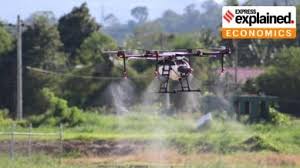
- 02 Sep 2024
In News:
Farmers in Bhagthala Khurd, Kapurthala, and Amritsar are increasingly using drones to apply pesticides to their maize and moong crops. Drones, also known as unmanned aerial vehicles (UAVs), are advanced flying machines that can be operated either autonomously or via remote control.
Drone Technology in Agriculture
While the use of drones in Indian agriculture is still emerging, it shows great potential. In Punjab, 93 out of the 100 drones provided to farmers by the Indian Farmers Fertiliser Cooperative (IFFCO) under the Centre’s ‘NAMO Drone Didi’ scheme are already in operation. Each drone, costing Rs 16 lakh, is equipped with a 12-litre water tank.
Benefits
- Health Protection: Drones minimize farmers' direct exposure to harmful pesticides, reducing the risk of health issues like cancer and kidney problems.
- Efficiency: Drones can spray an acre in just 5-7 minutes, significantly faster than the several hours required for manual application. They ensure a uniform application, which can enhance crop yields.
- Data Collection: Drone data helps pinpoint areas requiring attention, leading to better crop management and increased profits.
- Nano Fertilisers: Drones effectively handle nano fertilisers, ensuring even distribution of these small quantities that are difficult to spread manually.
- Pest Control: Drones enable timely application of pesticides during infestations of pests such as pink bollworms, locusts, and whiteflies.
- Environmental Benefits: Drones improve nutrient absorption from nano fertilisers by up to 90%, reducing runoff and pollution. Leaf-based application is also less polluting than soil-based methods.
- Water Conservation: Drones reduce water usage by up to 90% compared to traditional methods.
- Cost Reduction: They decrease the need for manual labor and reduce pesticide and chemical use, lowering overall costs.
- Additional Uses: Drones are also used to drop seed balls (a mix of soil and cow dung with seeds) for potential reforestation projects.
Challenges
- Job Loss: The use of drones may reduce demand for manual labor, affecting job opportunities for laborers.
- Knowledge and Training: Farmers may lack the necessary skills and training to operate drones effectively.
- Cost: The high cost of drones can be a significant barrier for many farmers.
- Regulatory Barriers: Regulatory challenges may complicate the adoption of drones in agriculture.
Initiatives
- Digital India Campaign: Aims to enhance digital infrastructure and provide training.
- Indian Council of Agricultural Research (ICAR): Promotes precision agriculture technologies, including drones.
- Production Linked Incentive (PLI) Scheme: Offers Rs. 120 crore (US$ 14.39 million) to incentivize domestic drone manufacturing and reduce import reliance.
- Sub-Mission on Agricultural Mechanization (SMAM): Provides financial aid to farmers purchasing drones, making technology more accessible.
- NAMO Drone Didi Scheme: Launched to empower women Self-Help Groups (SHGs) and provide access to modern agricultural technology.
- Support and Training: Efforts are underway to offer training and support to farmers to overcome adoption barriers.
Conclusion and Way Forward
Drone technology holds the promise of transforming agriculture by boosting efficiency, yields, and cost-effectiveness. In Punjab, where traditional manual methods have prevailed, drones offer a new approach to pesticide and fertiliser application. It is essential for farmers and policymakers to work together to address challenges and ensure that the benefits of drones are fully realized while mitigating any potential drawbacks.
What does spaceflight do to the human body?
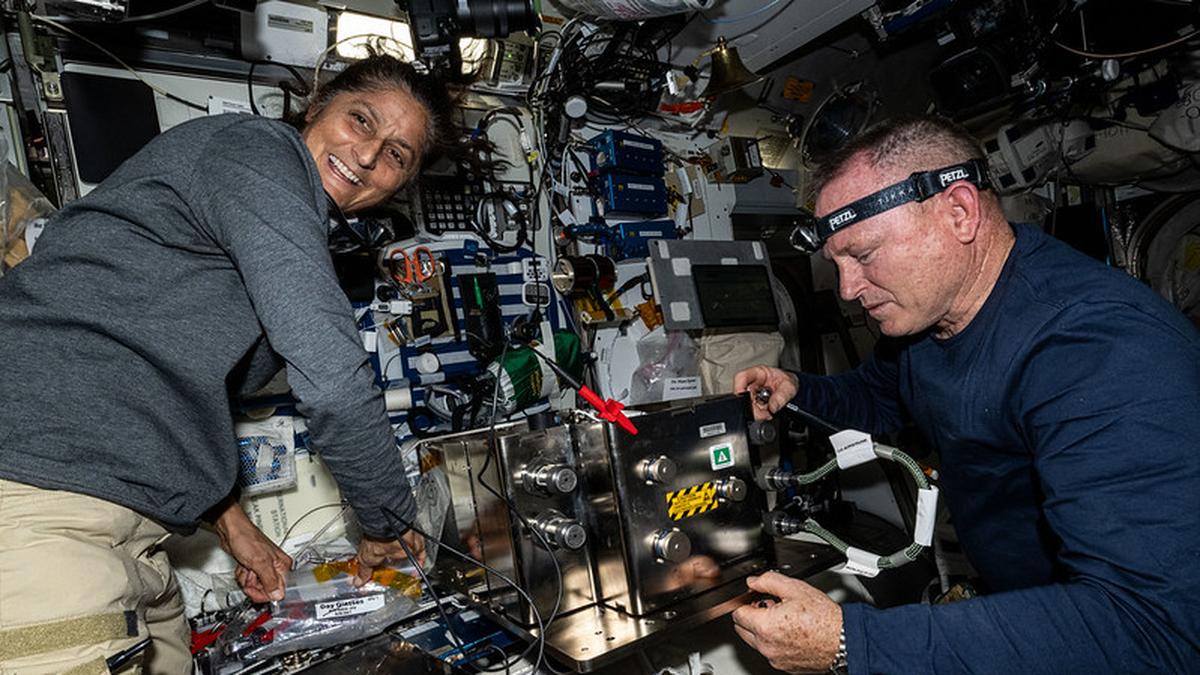
- 01 Sep 2024
In News:
- On August 24, 2023, NASA announced that Boeing’s Starliner crew capsule was deemed unsafe for the return of astronauts Sunita Williams and Barry Wilmore from the International Space Station (ISS).
- Williams and Wilmore’s stay onboard the ISS has been extended until February 2025, with their return planned via a SpaceX crew capsule in September 2024.
- Starliner will undock and return uncrewed.
Understanding Space
Definition and Characteristics
- What is Space?
- Space is defined as the area above the Karman line (100 km above sea level), transitioning from ‘earth-like’ to ‘space-like’ conditions.
- Microgravity Explained
- Astronauts experience microgravity due to the diminishing force of gravity, not complete absence, leading to various physiological effects.
Environmental Challenges
- Radiation in Space
- The Van Allen radiation belts, located above the Karman line, pose a significant challenge, exposing astronauts to charged particles.
- Historical research during the Apollo program determined that exposure levels in these belts are not harmful.
Effects of Space on the Human Body
Physiological Changes
- Bone Health: Microgravity leads to bone weakening, potentially causing renal stones due to excess mineral deposition.
- Digestive Issues: Food movement slows, contributing to potential weight gain.
- Eye Health: Spaceflight-associated neuro-ocular syndrome (SANS) affects about 20% of astronauts, with 70% of long-duration astronauts affected, causing vision impairment.
- Cardiovascular Effects: Reduced workload on the heart can result in muscle shrinkage.
- Muscle and Blood Changes: Muscle mass and strength decline; increased loss of red blood cells necessitates dietary adjustments.
Cognitive and Psychological Factors
- Balance and Orientation: Altered signals in microgravity challenge the brain's ability to maintain balance.
- Psychological Impacts: Isolation, fatigue, and stress from family separation contribute to mental health challenges.
Mitigating the Effects of Space
Strategies and Research
- Exercise and Routines: Strict exercise regimens and predictable routines are critical for maintaining astronaut health during missions.
- Nutritional Adjustments: Research is ongoing into how nutrients and drugs are metabolized in space.
- Monitoring and Countermeasures: Development of portable optical coherence tomography machines for SANS detection is underway, alongside potential countermeasures like lower body negative pressure and artificial gravity exposure.
Ongoing Research Initiatives
- Understanding Spaceflight Effects: The "space omics" studies aim to identify how space environments affect human biology, exemplified by NASA’s Twins Study.
- International Collaboration: Programs like Japan’s KAKENHI and Europe’s Space Omics Topical Team, along with U.S. research protocols, are exploring biological responses to space conditions.
Duration of Human Space Missions
Historical Context and Current Trends
- Increased Duration: The average time spent in space has risen from one month in the 1960s to six months in the 2020s.
- Current Missions
- Williams and Wilmore will potentially spend 256 days in orbit.
- Record holders: Valeri Polyakov (437 days), Frank Rubio (370 days), and Oleg Kononenko (over 1,000 days across missions).
Future Aspirations
- Long-Duration Missions: The shift from lunar missions to potential permanent moon bases and human missions to Mars presents new challenges in safety and health for astronauts.
DRAFT GUIDELINES ON PASSIVE EUTHANASIA IN INDIA
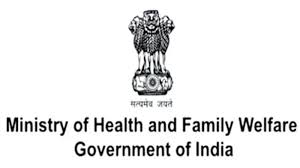
- 30 Sep 2024
Introduction
The Union Health Ministry of India has released new draft guidelines regarding passive euthanasia, aiming to address the complexities surrounding the withdrawal of life support for terminally ill patients. This move is significant, as it provides clarity for both medical professionals and patients regarding end-of-life care. The guidelines represent an effort to bridge the existing regulatory gap, ensuring ethical practices in sensitive medical decisions.
Understanding Euthanasia
Definition and Types
Euthanasia refers to the practice of intentionally ending a patient's life to alleviate suffering. The term originates from Greek, meaning "good death." Euthanasia can be categorized into several types:
- Active Euthanasia: Actively causing death, such as administering a lethal injection.
- Passive Euthanasia: Withholding life-sustaining treatments, allowing death to occur naturally.
- Voluntary Euthanasia: Conducted with the patient’s consent.
- Involuntary Euthanasia: Performed without patient consent, often in cases where the patient’s wishes are unknown.
Legal Context
While active euthanasia remains illegal in India, passive euthanasia was legalized by the Supreme Court in March 2018. This legal framework allows for the withdrawal of life support under specific circumstances.
Key Provisions of the Draft Guidelines
Conditions for Withdrawal of Life Support
The guidelines stipulate four critical conditions under which life support may be withdrawn:
- Brainstem Death: The patient must be declared brainstem dead as per the Transplantation of Human Organs and Tissues Act (THOA) of 1994.
- Medical Prognosis: The patient's condition must be advanced, indicating that aggressive therapeutic interventions are unlikely to yield benefits.
- Informed Refusal: The patient or their surrogate must document an informed refusal of continued life support following an understanding of the prognosis.
- Legal Compliance: Procedures must align with the legal principles established by the Supreme Court.
Decision-Making Process
The decision to withdraw life support requires a multi-tiered approach:
- Primary Medical Board (PMB): A group of at least three physicians must reach a consensus and explain the medical situation to the patient’s surrogate.
- Secondary Medical Board (SMB): A further validation by another set of three physicians, including one appointed by the district’s Chief Medical Officer, is necessary to confirm the PMB’s decision.
Advance Medical Directives
The guidelines emphasize the importance of advance medical directives, allowing individuals to document their healthcare preferences in case they lose decision-making capacity.
Ethical Considerations
Concerns from the Medical Community
While the guidelines aim to provide clarity, there are concerns regarding the legal scrutiny that doctors may face. The Indian Medical Association (IMA) has raised issues about the potential for undue stress on medical professionals, who historically have made these decisions in good faith without formal guidelines. They argue that placing such decisions within a regulatory framework might misinterpret standard medical practices.
Patient Autonomy and Dignity
The guidelines uphold the fundamental rights to autonomy, privacy, and dignity. Patients capable of making healthcare decisions can refuse life-sustaining treatments, even if such refusals may lead to death. The emphasis on informed decision-making seeks to ensure that patients can navigate their end-of-life choices with dignity.
Implications for Policy and Practice
Need for Stakeholder Feedback
The Health Ministry has solicited feedback from stakeholders, including healthcare professionals and the public, by October 20, 2024. This participatory approach aims to refine the guidelines and address any concerns regarding their implementation.
Balancing Ethical and Practical Considerations
The draft guidelines represent a significant step towards formalizing the process of passive euthanasia in India. They attempt to balance ethical considerations surrounding patient autonomy with the practical realities faced by healthcare providers.
Conclusion
The introduction of draft guidelines on passive euthanasia marks a pivotal moment in India's healthcare landscape. By clarifying the legal and ethical frameworks surrounding end-of-life decisions, these guidelines aim to enhance the dignity of terminally ill patients while providing essential support to healthcare professionals. The ongoing discourse surrounding these guidelines will be crucial in shaping their final form and ensuring their alignment with societal values and ethical norms.
CONCERNS OVER JUDICIAL CONDUCT
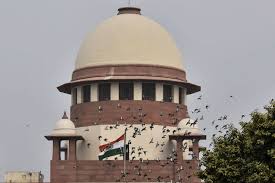
- 29 Sep 2024
Background
A recent incident involving Justice V Srishananda of the Karnataka High Court has raised serious concerns regarding judicial comments and conduct. During a hearing, Justice Srishananda referred to a locality in Bengaluru as being “in Pakistan” and made an objectionable remark against a female lawyer. Although he subsequently apologized, the Supreme Court, led by Chief Justice D Y Chandrachud, expressed serious concern, highlighting the rarity of such judicial reproach.
Constitutional Framework for Judicial Discipline
Impeachment: The Sole Recourse
Judges of constitutional courts, including the Supreme Court and High Courts, enjoy substantial protections to maintain independence from executive interference. However, this raises the question of accountability: who oversees the judiciary?
- Article 124(4): This article outlines that judges can only be removed through impeachment, which requires a political process involving both Houses of Parliament. The grounds for impeachment are limited to "proved misbehaviour" or "incapacity."
- High Standards for Impeachment: The necessity for a two-thirds majority in both Houses makes successful impeachment exceedingly rare. Historically, only five impeachment proceedings have been initiated, with only one resulting in successful impeachment (Justice Soumitra Sen).
Challenges in Addressing Judicial Misconduct
Certain actions, such as indiscipline or bias, may not meet the impeachment standard but still warrant attention. The Supreme Court faces a dilemma: how to address these issues without the option of impeachment.
Mechanisms for Judicial Accountability
Judicial Intervention
The Supreme Court can intervene through judicial action, as evidenced by past cases:
- Contempt of Court: In 2017, the Supreme Court sentenced Calcutta High Court’s Justice C S Karnan to six months’ imprisonment for contempt. This case raised concerns about one constitutional court punishing judges of another, as it set a precarious precedent.
Transfer Policy
The Supreme Court also influences High Court judges through its Collegium system:
- Collegium Recommendations: The Collegium recommends the transfer of judges, which can serve as a disciplinary tool. The case of Justice P D Dinakaran illustrates this practice. Facing allegations of corruption, he was transferred from Karnataka to Sikkim, a move criticized as merely “transferring corruption.”
Conclusion
The incident involving Justice Srishananda underscores the complexities of judicial accountability in India. While the Constitution provides for impeachment as the only formal recourse against errant judges, the high threshold for such proceedings necessitates alternative mechanisms for maintaining judicial integrity. The Supreme Court's ability to intervene and the use of transfer policies are critical components in addressing judicial misconduct, but they also raise questions about the balance between accountability and judicial independence.
SOUTH CHINA SEA
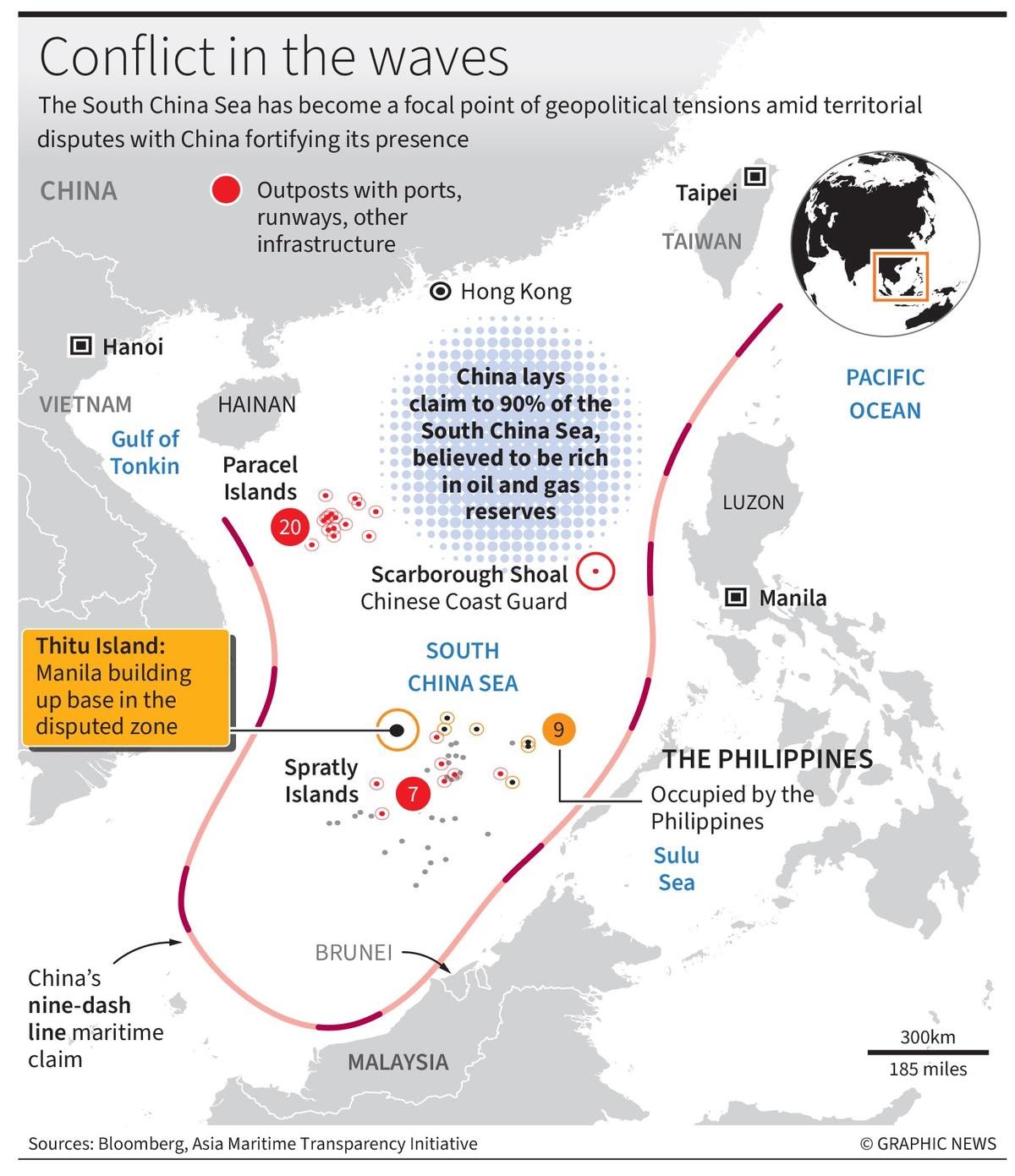
- 28 Sep 2024
In News:
In recent years, maritime East Asia has emerged as a battleground for intensified power politics, particularly in the East China Sea and the South China Sea. These regions involve complex territorial disputes and geopolitical tensions, particularly concerning China, Japan, Taiwan, and several Southeast Asian nations.
Geographic and Strategic Significance
East China Sea
- Territorial Claims: The East China Sea borders China, Taiwan, Japan, and South Korea, with the Senkaku/Diaoyu islands being a focal point of contention.
- Crises: Multiple crises have erupted over these islands, reflecting deep-seated national interests.
South China Sea
- Key Players: Located between China, Taiwan, and five Southeast Asian countries—Vietnam, Malaysia, Brunei, the Philippines, and Indonesia.
- Flashpoint: This area has become a critical flashpoint in the Indo-Pacific, with China aggressively asserting its claims.
China's Motivations
Naval Exercises and Claims
- Naval Collaboration: China has conducted naval exercises with Russia in the South China Sea, showcasing military capabilities and reinforcing territorial claims.
- Legal Standing: Despite a 2016 ruling by a permanent court of arbitration declaring China's claims to lack legal basis, Beijing has rejected this decision.
Regional Responses to China's Actions
1. Enhancing Defence Capabilities
- Increased Defence Spending: Countries like Japan and the Philippines are significantly boosting their defence budgets, with Japan aiming to double its spending by 2027.
- Acquisition of Technology: The Philippines has acquired anti-ship BrahMos missiles from India as part of its defence enhancement efforts.
2. Addressing Maritime Activities
- Shift in Policy: The Philippines has pivoted from a conciliatory approach to actively publicizing confrontations with Chinese vessels.
- Public Diplomacy: The Philippines employs social media to document and share encounters with Chinese ships, shaping public perceptions.
3. Strengthening Alliances
- U.S. Cooperation: The Philippines, Japan, and South Korea are reinforcing their defence relationships with the U.S., expanding cooperation in various domains including joint exercises.
- Trilateral Meetings: The U.S., Japan, and South Korea have deepened their trilateral cooperation, addressing concerns about unilateral changes to the status quo in the Indo-Pacific.
U.S. Credibility and Strategic Implications
Despite efforts to bolster alliances, concerns remain regarding U.S. credibility and the impact of domestic politics on its international commitments. There is ongoing debate over whether U.S. engagement balances Chinese power or exacerbates tensions.
China’s Sovereignty Perspective
National Security Framework
- Defence White Paper: China's 2019 Defence White Paper emphasizes that the South China Sea islands and Diaoyu Islands are integral parts of its territory.
- Infrastructure Development: China claims its actions are defensive, building infrastructure and conducting patrols, while regional nations view these actions as provocative.
Economic Importance of the Seas
- Maritime Trade Routes: Key maritime trade routes in East Asia traverse these waters, with the Taiwan Strait being a critical choke point.
- Resource Richness: The region contains vast reserves of untapped oil and natural gas, making it economically significant.
China's Aggressive Tactics
Infrastructure and Militarization
- Building Facilities: China is constructing military installations and artificial islands in both the East and South China Seas.
- Conflict with Japan: China has frequently contested Japanese claims, resulting in significant diplomatic and military tensions.
South China Sea Belligerence
- Power Asymmetry: China's navy is the largest in the world, enabling it to project power effectively in the South China Sea.
- Aggressive Maneuvers: Tactics include harassment of resupply missions, ramming vessels, and the use of military-grade lasers.
Recent Escalations in the South China Sea
- Increased Incidents: Since 2022, clashes between China and the Philippines have intensified, especially around Second Thomas Shoal and Sabina Shoal.
- Dangerous Encounters: China's larger Coast Guard vessels pose significant risks during confrontations, raising concerns about potential miscalculations.
Conclusion
The evolving power dynamics in maritime East Asia highlight the interplay of national interests, regional security, and international cooperation. The situation remains fluid, with significant implications for global trade, security, and diplomatic relations. Understanding these complexities is essential for addressing the challenges posed by an assertive China and fostering stability in the region.
ARMED FORCES (SPECIAL POWERS) ACT (AFSPA)
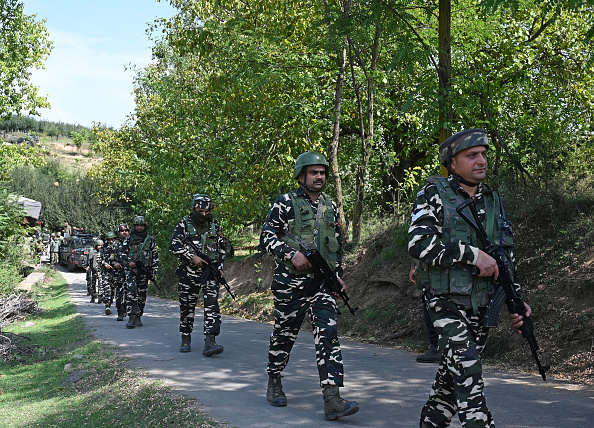
- 27 Sep 2024
In News:
The Armed Forces (Special Powers) Act (AFSPA) is a controversial law that grants extraordinary powers to the armed forces in designated "disturbed areas." Recently, the Ministry of Home Affairs extended AFSPA for six months in parts of Nagaland and Arunachal Pradesh, highlighting ongoing security concerns in these regions.
Current Status of AFSPA
Extended Areas
- Nagaland: AFSPA has been extended to eight districts—Dimapur, Niuland, Chumoukedima, Mon, Kiphire, Noklak, Phek, and Peren—along with 21 police stations in additional districts.
- Arunachal Pradesh: The Act continues in Tirap, Changlang, and Longding districts, as well as in certain areas of Namsai district.
Duration of Extension
The current extension is effective from October 1, 2024, lasting for six months unless revoked earlier. These areas were initially declared "disturbed" on April 1, 2024.
About AFSPA
Objective
AFSPA aims to maintain law and order in regions affected by insurgency or unrest, providing armed forces with necessary powers to perform their duties.
Key Provisions
- Section 3: Empowers the Governor or the Central Government to declare areas as "disturbed."
- Section 4: Grants special powers for arrests and searches without warrants.
- Section 6: Mandates that arrested individuals and seized property be handed over to the police.
- Section 7: Prosecution of armed forces personnel requires prior approval from the Central Government.
Rationale for Implementation
- To enable effective counter-insurgency operations.
- To ensure the protection of armed forces members.
- To uphold national security and sovereignty.
Criticisms and Issues
AFSPA has faced significant backlash for:
- Violating Fundamental Rights: Critics argue it undermines Articles 14, 19, and 21 of the Constitution.
- International Law Conflicts: It is perceived as contrary to the Universal Declaration of Human Rights and the International Covenant on Civil and Political Rights.
- Erosion of State Autonomy: The Act is viewed as an infringement on state powers, even in peaceful contexts.
Ineffectiveness and Atrocities
Reports of human rights abuses and the ineffectiveness of AFSPA in genuinely countering insurgency raise questions about its continued application.
Government's Position
Union Home Minister Amit Shah has noted that AFSPA has been lifted from 70% of the northeastern states, but it remains in force in certain areas, including Jammu and Kashmir, where revocation is also being considered.
Jeevan Reddy Committee
On November 19, 2004, the Central Government established a five-member committee led by Justice B.P. Jeevan Reddy to assess the Armed Forces (Special Powers) Act (AFSPA) in northeastern states. The committee was tasked with reviewing the law's implications and effectiveness.
Key Findings
In its 2005 report, the Jeevan Reddy Committee made several critical observations and recommendations:
- Complete Repeal: The committee advocated for the complete repeal of AFSPA, labeling it a "symbol of hate and oppression" and describing it as an "instrument of high-handedness."
- Incorporation into Other Legislation: It suggested that relevant provisions of AFSPA be integrated into the Unlawful Activities (Prevention) Act, 1967, with necessary modifications to delineate the powers of armed and paramilitary forces.
- Establishment of Grievance Cells: The committee recommended the creation of grievance cells in each district where armed forces are deployed, aimed at addressing public complaints and concerns regarding military actions.
Additional Recommendations
- The 5th report of the Second Administrative Reforms Commission also echoed the call for repealing AFSPA, reinforcing the need for legislative reform in addressing security issues.
- In 2016, the Supreme Court ruled that the armed forces cannot evade investigation for alleged excesses committed during their duties, even in "disturbed areas." This ruling clarified that the legal protections offered by AFSPA are not absolute, emphasizing accountability.
Conclusion
AFSPA remains a contentious issue with significant implications for civil rights, regional stability, and national security. A careful review and possible reform of the Act are essential to balance security needs with the protection of fundamental rights.
PLFS REPORT 2023-24
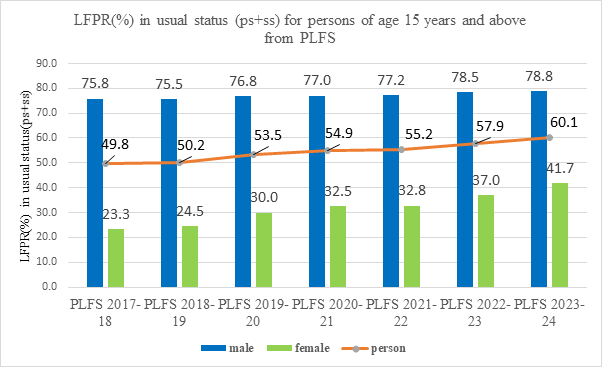
- 26 Sep 2024
In News:
The Periodic Labour Force Survey (PLFS) conducted by the National Statistical Office (NSO) from July 2023 to June 2024 provides crucial insights into the employment landscape in India.
Key Findings from the PLFS Report 2023-24
- Labour Force Participation Rate (LFPR):
- The LFPR for individuals aged 15 years and above rose to 60.1%, an increase from 57.9% the previous year.
- For males, LFPR is at 78.8%, while for females, it increased to 41.7%, up from 37.0%.
- Worker Population Ratio (WPR):
- The WPR for the same age group stands at 58.2%. This is composed of 76.3% for males and 40.3% for females.
- Female WPR improved from 35.9% to 40.3% during the reporting period.
- Unemployment Rate (UR):
- The overall unemployment rate is 3.2%. It slightly declined for males from 3.3% to 3.2%, while it increased for females from 2.9% to 3.2%.
Overview of the PLFS
The PLFS, initiated in April 2017, aims to provide timely and accurate labor market data. It focuses on two main objectives:
- Short-term Employment Indicators: Measure key employment metrics every three months in urban areas using the Current Weekly Status (CWS) approach.
- Annual Estimates: Gather employment and unemployment data for both urban and rural areas, assessing them in terms of Usual Status and CWS.
Methodology and Sample Design
- The survey employs a rotational panel sampling design in urban areas, where households are visited multiple times to ensure comprehensive data collection.
- During the 2023-24 period, a total of 12,800 Field Sampling Units (FSUs) were designated, with 12,743 successfully surveyed.
Conceptual Framework
Key indicators measured include:
- Labour Force Participation Rate (LFPR): Percentage of the population working or actively seeking work.
- Worker Population Ratio (WPR): Percentage of employed individuals in the total population.
- Unemployment Rate (UR): Proportion of unemployed individuals among the labor force.
Challenges in Job Creation
India continues to face significant challenges in generating formal jobs. Key factors contributing to this issue include:
- Informalization of Employment: Growth in sectors like agriculture and construction is leading to increased informal employment, lacking social security and job protections.
- Technological Advancements: Automation and AI threaten job opportunities, even for skilled workers, as evidenced by layoffs in the IT sector.
- Skill Mismatch: Despite a push for skill development, the share of skilled jobs has declined, highlighting a growing disconnect between training programs and labor market needs.
- Policy Impacts: Past policies, such as demonetization and poorly implemented GST, have negatively impacted small and medium enterprises (SMEs), which are vital for job creation.
Way Forward:
To address these challenges, several strategies are proposed:
- Sectoral Diversification: Fostering investments in manufacturing, renewable energy, and technology can generate productive jobs.
- Support for MSMEs: Targeted financial aid and regulatory relief for micro, small, and medium enterprises are crucial for boosting their employment potential.
- Skill Development: Aligning training initiatives with current industry demands, particularly in emerging sectors, is essential.
- Focus on New-Age Services: Encouraging growth in sectors like e-commerce and online education could create diverse job opportunities.
Conclusion
The PLFS 2023-24 reveals an encouraging increase in labor force participation, particularly among women, while also highlighting persistent challenges in unemployment and gender disparities. The findings underscore the need for continued efforts to enhance job creation and improve employment conditions in both formal and informal sectors.
TRIPURA'S INSURGENCY RESOLUTION: A LANDMARK DECLARATION
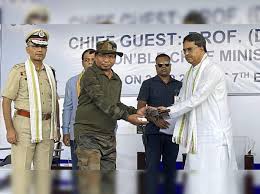
- 25 Sep 2024
In News:
Recent Developments
Insurgency-Free Declaration
Tripura Chief Minister Manik Saha has officially declared the state "insurgency-free" following a significant surrender ceremony where 584 militants from the National Liberation Front of Tripura (NLFT) and the All-Tripura Tiger Force (ATTF) laid down their arms.
Memorandum of Settlement
This milestone follows a Memorandum of Settlement signed on September 4 between the central government and various insurgent groups, witnessed by the union home minister. The Tripura government has successfully facilitated 12 peace accords over the last decade, leading to over 10,000 insurgents surrendering.
Understanding Insurgency in Tripura
Historical Context
Tribal Composition
Tripura is home to 19 indigenous tribes, including the Tripra, Reang, and Jamatia, with Kok Borok as the primary language alongside other Tibeto-Burmese dialects.
Journey to Statehood
- Accession: Tripura became part of the Indian Union on October 15, 1949.
- Union Territory: It was designated as a Union Territory on November 1, 1956.
- Statehood: Tripura attained full statehood on January 21, 1972.
Causes of Insurgency
- Demographic Changes: A significant influx of Bengali refugees from East Pakistan resulted in the indigenous population declining from 95% in 1931 to 31% by 1991.
- Tribal Discontent: The tribal population lost control over land and resources, leading to widespread grievances.
- Socio-Economic Factors: Issues such as geographic isolation, socio-economic challenges, corruption, and tribal land alienation fueled unrest.
Evolution of Political Movements and Insurgency
Formation of Political Organizations
- TUJS: Established in 1967 to advocate for tribal rights and autonomy.
- Armed Struggle: The Tripura Sena emerged in 1970, followed by the Tripura National Volunteers (TNV) in 1978, both pushing for an independent tribal state.
Rise of Insurgent Groups
Key groups involved include:
- TUJS: Formed in 1971.
- TNV: Established in 1981.
- NLFT: Founded in 1989.
- ATTF: Formed in 1990.
Communal Clashes and Military Response
- Opposition from Bengali Population: Groups like Amra Bangali emerged in opposition to tribal demands, leading to violent clashes with over 1,800 fatalities.
- Military Intervention: The Indian Army was deployed in 1980 to restore order.
Attempts at Peace and Resurgence of Militancy
TNV Settlement
The TNV signed a peace agreement with the state government in 1988, focusing on restoring tribal lands. However, issues with implementation led to the rise of new militant groups.
Resurgence of Insurgency
Between 1996 and 2004, insurgency gained traction, supported by logistics from Bangladesh and external networks, leveraging the region's challenging geography.
Strategic Response to Insurgency
- Counter-Insurgency Operations
- The state focused on effective counter-insurgency operations involving local police and paramilitary forces, minimizing the need for military deployment.
- Psychological Operations
- Efforts were made to shift perceptions among tribal communities, exposing the exploitative nature of insurgents.
- Confidence-Building Measures
- Rehabilitation packages and public appeals by state leaders encouraged insurgents to reintegrate into society.
- Civic and Developmental Initiatives
- Comprehensive development initiatives were implemented, enhancing healthcare, connectivity, and job opportunities, alongside civic action programs by security forces.
- Political and Governance Reforms
- Strengthening local governance through autonomous councils and encouraging tribal participation aimed to foster a more inclusive development process.
Conclusion
Tripura's journey to overcome insurgency highlights the effectiveness of a multi-faceted approach, combining socio-economic development with strategic military and political initiatives. The state's experience illustrates that insurgency can be addressed through sincere leadership and a balanced focus on military and socio-economic challenges.
INDIA'S STRATEGIC PUSH FOR A DOMESTIC SEMICONDUCTOR ECOSYSTEM
- 24 Sep 2024
Introduction
India is actively pursuing the establishment of a domestic semiconductor ecosystem to lessen dependence on imports and tackle global supply chain vulnerabilities. This initiative, launched under the Semiconductor Mission in 2021 with a USD 10 billion investment, is vital for national security, particularly in defense and telecommunications.
Current Status of the Semiconductor Industry in India
Market Overview
- 2022 Market Size: USD 26.3 billion
- Projected Growth: Expected to reach USD 271.9 billion by 2032, with a CAGR of 26.3%.
Import-Export Dynamics
- Imports: USD 5.36 billion in 2021; efforts are underway to reduce this reliance.
- Exports: USD 0.52 billion in 2022, marking the highest level to date.
Government Initiatives
- India Semiconductor Mission (ISM): Part of the Digital India Corporation, focused on developing a strong semiconductor ecosystem.
- Financial Support: Covers 50% of project costs for semiconductor and display manufacturing facilities.
- Semicon India Programme: Launched in December 2021 with ?76,000 crore (around USD 9.2 billion) dedicated to semiconductor manufacturing.
- FY24 Budget Increase: Allocated ?6,903 crore (approximately USD 833.7 million) for further development.
International Collaborations
- MoU with the European Commission: Aims to enhance semiconductor ecosystems.
- MoC with Japan: Focused on improving supply chain resilience in the semiconductor sector.
Importance of Semiconductors for India
Economic Growth and Industrial Development
- Semiconductors are crucial for enhancing India's electronics manufacturing, targeting a notable share of the projected USD 1 trillion global semiconductor market by 2030.
- The Semiconductor Mission is projected to generate 35,000 direct jobs and 100,000 indirect jobs, potentially raising electronics manufacturing to USD 300 billion by 2026.
National Security and Strategic Autonomy
- Essential for defense and telecommunications, semiconductors ensure reliable supplies for critical defense systems and secure communication networks.
Technological Self-Reliance and Innovation
- With around 65-70% of electronic components currently imported, primarily from China, initiatives aim to foster domestic innovation and reduce this reliance.
Global Supply Chain Integration
- The objective is to position India as a key player in the global electronics supply chain, increasing its current 3% share of the global electronics manufacturing value.
Job Creation and Skill Development
- The semiconductor industry is anticipated to drive job creation and skill development, enhancing STEM education and research in advanced technologies.
Challenges Facing India's Semiconductor Aspirations
Infrastructure Issues
- India faces significant infrastructure challenges, including unreliable power supply and water shortages that impact semiconductor production.
Talent Shortage
- There is a projected need for 250,000 to 300,000 skilled professionals in semiconductor fields by 2027.
High Manufacturing Costs
- Semiconductor manufacturing is capital-intensive, and operational costs in India are generally higher compared to established hubs like Taiwan and South Korea.
Global Supply Chain Vulnerabilities
- Global supply chain disruptions, exacerbated by events such as the Russia-Ukraine conflict, present risks to India's semiconductor goals.
Environmental Challenges
- The energy-intensive nature of semiconductor manufacturing raises concerns about its environmental impact, particularly regarding greenhouse gas emissions.
Competition from Other Emerging Markets
- India faces competition from countries like Vietnam and Malaysia, which are successfully attracting semiconductor investments with favorable conditions and incentives.
Strategies for Advancing India's Semiconductor Vision
Enhance Education and Training
- Expand semiconductor engineering programs and collaborate with global companies to develop relevant curricula and hands-on training.
Develop Domestic Chip Design Capabilities
- Invest in chip design by establishing dedicated centers in technology hubs to encourage innovation.
Build a Comprehensive Supply Chain
- Create a robust domestic supply chain by attracting investments across all segments, from raw materials to advanced packaging.
Establish a Sovereign Semiconductor Fund
- Launch a dedicated fund for semiconductor projects to provide long-term investment and reduce reliance on foreign funding.
Implement a "Chip Diplomacy" Approach
- Use India's geopolitical position to negotiate technology transfers and partnerships with leading semiconductor nations.
Launch a "Green Semiconductor" Initiative
- Aim to become a leader in sustainable semiconductor manufacturing by minimizing environmental impacts.
Create a National Semiconductor Commons
- Establish shared infrastructure for research and prototyping to lower barriers for startups and promote innovation.
Conclusion
To fulfill its semiconductor aspirations, India must enhance education and training, develop a strong supply chain, and foster strategic collaborations. By addressing infrastructure challenges and skill gaps while promoting sustainable practices, India can secure its position as a significant player in the global semiconductor industry and strive for technological self-reliance.
ANALYSIS OF INDIA'S TRADE DEFICIT
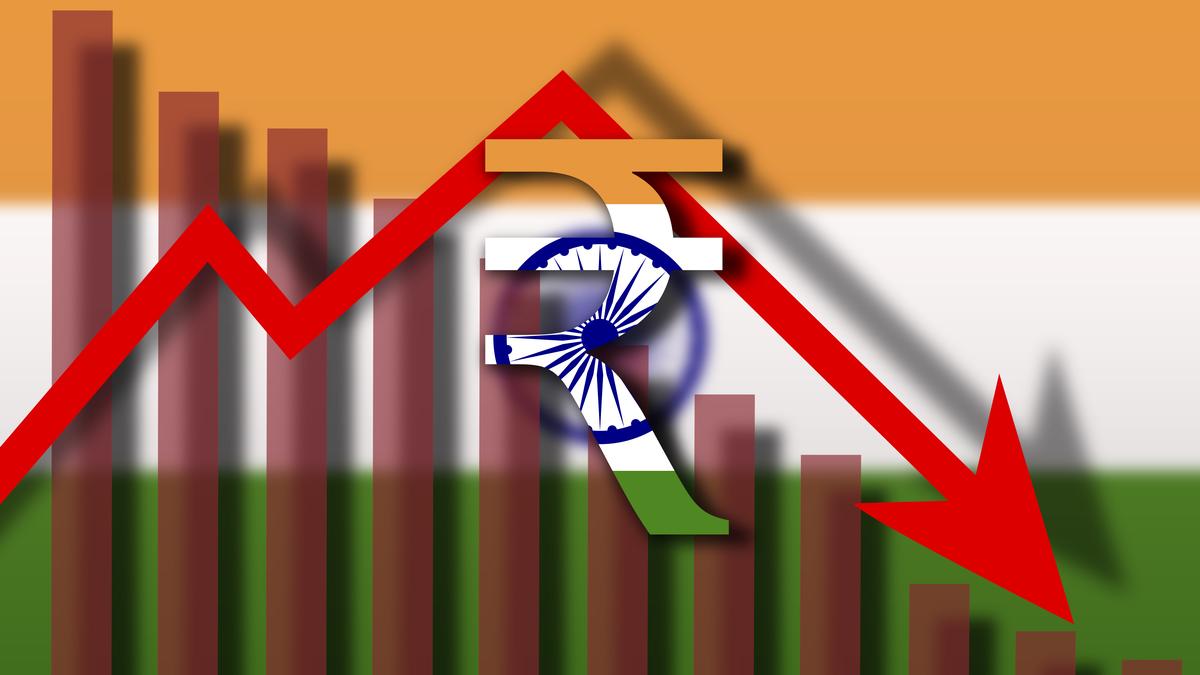
- 23 Sep 2024
Overview of the Trade Deficit
India experienced a notable increase in its trade deficit during July and August 2024, primarily due to declining exports and rising imports. This trend is indicative of both domestic challenges and global economic conditions.
Understanding Trade Deficit
A trade deficit occurs when a country's imports surpass its exports, leading to a negative trade balance. While not inherently detrimental, sustained trade deficits can result in issues such as currency depreciation, rising national debt, and pressure on local industries.
Factors Influencing India's Trade Deficit
Several key elements have contributed to the widening of India’s trade deficit in recent months:
- Decline in Exports
- Oil Exports: A sharp decline was observed in petroleum exports, which dropped by 22.2% in July and 37.6% in August, influenced by both weakened global demand and falling oil prices.
- Gems & Jewellery: This sector saw a reduction exceeding 20% in exports during both months, adversely affecting overall trade performance.
- Pharmaceuticals and Electronics: These sectors also faced slower growth due to ongoing weak global demand.
- China's Economic Slowdown
- Exports to China, particularly in materials such as stone and iron ore, diminished as China grappled with internal economic challenges and reduced infrastructure spending, negatively impacting India's export revenue.
- Surge in Gold Imports
- August saw a record $10.1 billion in gold imports, more than doubling previous figures. This increase was driven by lowered import duties and heightened domestic demand for the festive season, significantly contributing to the trade deficit.
- Decline in Oil Imports
- On a more positive note, India’s oil import bill decreased by nearly a third due to falling global oil prices, marking the lowest petroleum trade deficit in three years. However, this reduction did not sufficiently counterbalance deficits in other areas.
Implications of the Trade Deficit
- Currency Depreciation: A growing trade deficit may exert downward pressure on the Indian rupee, making imports costlier and potentially worsening the deficit further, given India's heavy reliance on imported commodities.
- Impact on Economic Growth: Prolonged trade deficits can hinder economic growth by reflecting diminished export competitiveness and excessive reliance on imports.
- Foreign Exchange Reserves: While India’s foreign exchange reserves are currently robust, a sustained deficit could deplete these reserves, complicating efforts to stabilize the rupee in the future.
Long-term Challenges and Outlook
India's trade deficit is shaped by a mixture of global and domestic influences:
- Weak Global Demand: Economic sluggishness in developed markets, such as the U.S. and EU, reduces demand for Indian exports, particularly in pharmaceuticals and textiles.
- China’s Economic Issues: As China seeks to offload surplus goods, India may face increased competition from cheaper imports, which could challenge domestic industries.
- Trade Barriers and Regulations: New international trade policies, particularly in the EU regarding environmental standards, impose additional compliance burdens on Indian exporters.
Conclusion and Strategic Recommendations
While India's escalating trade deficit poses challenges, it is not an insurmountable issue. Policymakers need to adopt strategic measures to tackle underlying structural problems:
- Boosting Exports: Enhancing the competitiveness of export sectors through technological investment and market expansion is vital. Strengthening trade agreements can also improve market access.
- Reducing Non-essential Imports: Minimizing reliance on luxury imports, particularly gold, while promoting domestic manufacturing can help in balancing the trade deficit.
- Developing Domestic Industries: Fostering growth in sectors such as electronics and renewable energy will not only reduce import dependence but also enhance export capacity.
- Managing Currency and Debt: Careful management of the rupee's valuation and maintaining adequate foreign exchange reserves are crucial in mitigating trade deficit impacts.
Achieving the ambitious goal of $1 trillion in exports for both goods and services by 2030 is attainable but requires overcoming current global economic hurdles, adapting to new trade regulations, and building a self-sufficient economy. By strategically addressing these challenges, India can work toward reducing its trade deficit while maintaining economic growth.
INTEGRATED DEVELOPMENT OF WILDLIFE HABITATS (IDWH) SCHEME
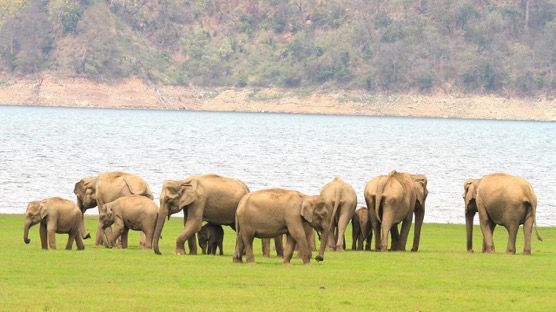
- 22 Sep 2024
In News:
The Union Cabinet has approved the continuation of the Integrated Development of Wildlife Habitats (IDWH) scheme for the 15th Finance Commission cycle, with a total outlay of ?2,602.98 crore. This scheme aims to enhance the conservation of wildlife and their habitats across India, building upon the earlier "Assistance for the Development of National Parks and Sanctuaries."
Overview of the Integrated Development of Wildlife Habitats (IDWH)
IDWH is a Centrally Sponsored Scheme designed to support various components critical to wildlife conservation. Key aspects of the scheme include:
- Support to Protected Areas: This encompasses national parks, wildlife sanctuaries, conservation reserves, and community reserves.
- Protection of Wildlife Outside Protected Areas: This aims to safeguard wildlife habitats and corridors beyond designated reserves.
- Recovery Programs: These initiatives focus on critically endangered species and their habitats.
Key Projects Under IDWH
The scheme integrates several prominent conservation projects:
- Project Tiger: Launched in 1973, this initiative seeks to ensure a viable population of Bengal tigers in their natural habitats. It employs advanced technologies such as the M-STrIPES application for effective management and monitoring.
- Project Elephant: Initiated in 1992, this project focuses on elephant conservation, addressing human-elephant conflicts, and promoting the welfare of domesticated elephants.
- Development of Wildlife Habitat: This includes Project Dolphin, which utilizes technology like Remotely Operated Vehicles (ROVs) for monitoring dolphin populations, and Project Lion, aimed at strengthening lion conservation efforts in line with the “Lion @ 2047” vision.
Significance of the Scheme
The IDWH scheme promises significant ecological and economic benefits:
- It is projected to generate over 50 lakh man-days of direct employment, alongside indirect job opportunities through eco-tourism and related activities.
- A total of 55 tiger reserves, 33 elephant reserves, and 718 protected areas will benefit from the scheme, enhancing biodiversity and ecosystem health.
- By supporting keystone species such as tigers, elephants, cheetahs, snow leopards, and lions, the scheme contributes to the overall integrity of these ecosystems.
The overall outlay for the three components for the 15th Finance Commission cycle as well as its remaining period:
S.No. Name of the Scheme Central Share State Share Total
1. Project Tiger 1575.00 955.00 2530.00
2. Project Elephant 182.58 54.00 236.58
3. Development of Wildlife Habitat 845.4 273.02 1118.42
*All figures in Rs. Crores Total 2602.98 1282.02 3885.00
Component of EFC 2024-25 2025-26
Project Tiger 365.00 365.00
Project Elephant 40.00 40.12
Development of Wildlife Habitat 195.00 183.16
*All figures in Rs. Crores Total 600 588.28
SRI LANKA’S PRESIDENTIAL ELECTIONS: IMPORTANCE AND IMPLICATIONS FOR INDIA
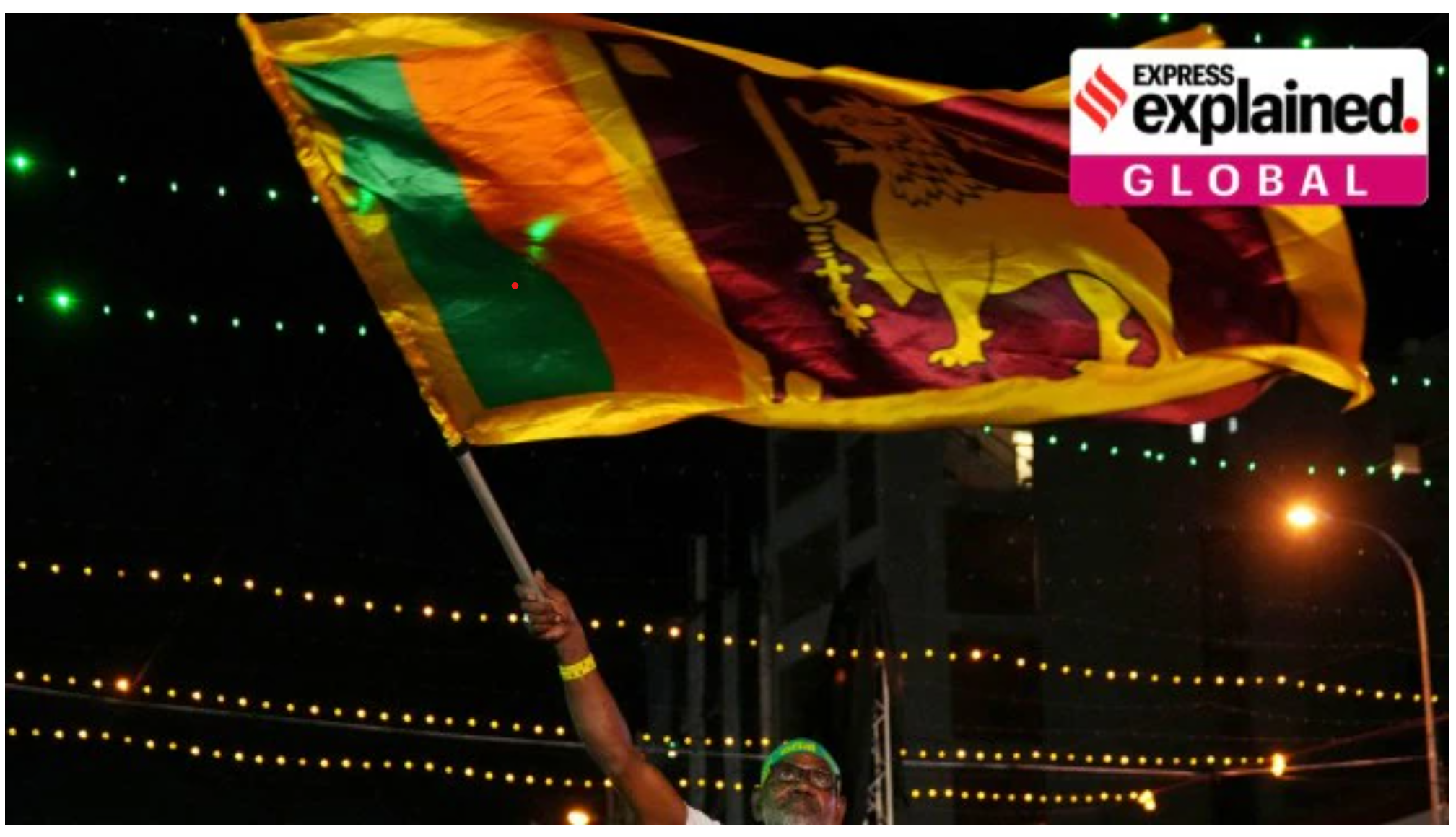
- 21 Sep 2024
Overview of the Elections
Sri Lanka is gearing up for its first presidential election since the significant protests of 2022 and an unprecedented economic crisis. Scheduled for September 21, the election comes at a critical juncture for the nation, following the ousting of the Rajapaksa regime.
Context of the Crisis
The protests were ignited by severe economic difficulties, including inflation soaring to 70% and shortages of essential goods like food, fuel, and medicine. While some improvements have been noted, a full recovery remains elusive, with economic concerns at the forefront of voters' minds.
Electoral Landscape
Voting System
- Candidates: 38 candidates are contesting, all men.
- Voting Process: Each of the 17 million eligible voters can select up to three candidates. A candidate needs over 50% of the votes to win outright; otherwise, a run-off will occur between the top two contenders.
India's Strategic Interests
Concerns over Regional Influence
India is closely monitoring the elections due to strategic interests, particularly in countering China's expanding influence in Sri Lanka. The previous administrations have leaned towards China, which has raised concerns in New Delhi.
Key Candidate Positions
- Sajith Premadasa: Historically skeptical of China; supports the implementation of the 13th Amendment for provincial power devolution, aligning with Indian interests.
- Anura Kumara Dissanayake: Has a pro-China background and has criticized Indian business interests in Sri Lanka, raising potential tensions with India.
Economic Recovery and Voter Sentiment
Current Economic Situation
Post-crisis, the economy has shown signs of stabilization, with no food or fuel shortages and reduced inflation. However, many Sri Lankans continue to struggle financially, feeling the impact of increased taxes and electricity rates mandated by the IMF bailout conditions.
Voter Priorities
The election marks a shift in voter focus, with economic recovery taking precedence over traditional ethnic or religious considerations. Skepticism about political promises is high, as citizens recall previous failures to deliver on reforms.
Conclusion: The Path Ahead
As Sri Lanka heads into this pivotal election, the outcome will be crucial for both the nation and its international relations, particularly with India. The next president's ability to navigate economic recovery and regional dynamics will significantly influence Sri Lanka's trajectory.
INDUS WATERS: INDIA FREEZES TALKS WITH PAKISTAN
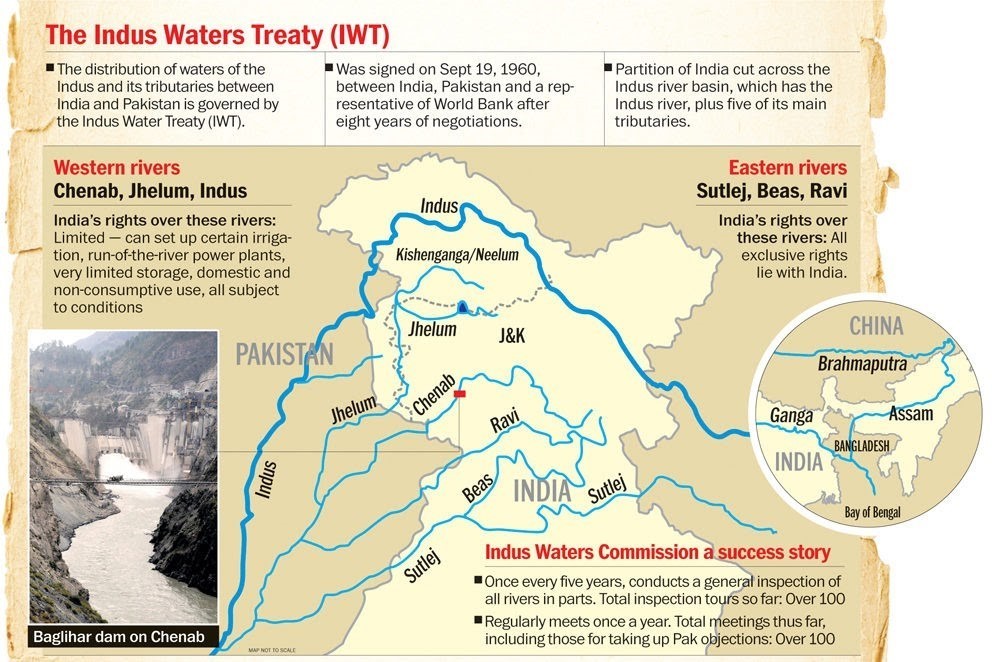
- 20 Sep 2024
In News:
India has decided to halt all meetings of the Permanent Indus Commission (PIC) until both governments engage in discussions to renegotiate the Indus Waters Treaty (IWT), a decision communicated by a senior official. The last PIC meeting occurred in May 2022, and since January 2023, India has made four attempts to initiate talks with Pakistan, but these efforts have not received satisfactory responses.
The IWT, established in 1960 with the mediation of the World Bank, governs the sharing of six rivers between India and Pakistan. Under this treaty, India controls the waters of the Ravi, Sutlej, and Beas rivers, while Pakistan has rights to the Sindh, Jhelum, and Chenab rivers. The treaty mandates annual meetings of the PIC, which have continued despite ongoing conflicts between the two nations. However, India’s recent push for renegotiation threatens the stability of this long-standing arrangement.
India's Notice for Review of the Indus Waters Treaty
India formally issued a notice to Pakistan on August 30, 2023, seeking modifications to the IWT, citing "fundamental and unforeseen changes" that necessitate a reassessment of the agreement. This is not an isolated instance; India had previously requested a review in January 2023, attributing the need for change to Pakistan’s persistent intransigence regarding its obligations under the treaty.
Key reasons for India’s demand include:
- Changes in population demographics and environmental challenges.
- The necessity for clean energy development to meet emissions targets.
- The impact of ongoing cross-border terrorism, which India argues affects water management and security.
The notification highlights issues related to two contentious hydroelectric projects in Jammu & Kashmir—the Kishanganga and Ratle projects—over which Pakistan has raised objections, claiming they violate the IWT. India asserts that these projects are "run-of-the-river" schemes that do not significantly impede river flow.
Dispute Resolution Mechanisms Under the Treaty
The IWT outlines a structured dispute resolution mechanism, as detailed in Article IX. This mechanism involves three levels:
- First Level: Initial discussions occur at the PIC, where either party must inform the other of planned projects.
- Second Level: If differences remain unresolved, a Neutral Expert, appointed by the World Bank, is engaged to mediate.
- Third Level: Should the Neutral Expert fail to resolve the issue, the dispute escalates to the Court of Arbitration.
Historically, both countries have used these mechanisms, although recent years have seen significant contention. After a Pakistan-backed terror attack in Uri in 2016, India’s Prime Minister expressed the sentiment that “blood and water cannot flow together,” leading to the suspension of routine talks.
The World Bank has navigated a complex situation, receiving requests from both nations for adjudication on overlapping disputes. In December 2016, it paused these processes to encourage direct negotiations. Despite attempts to resume dialogue between 2017 and 2022, Pakistan’s reluctance to engage has further complicated matters.
Current Status and Future Implications
India’s formal notification and its call for renegotiation may set a precedent that challenges the existing framework of the IWT. The continuation of the PIC's activities hinges on a willingness from both governments to address these evolving concerns collaboratively. As tensions persist and environmental needs grow, the future of water-sharing arrangements in the region remains uncertain. The overarching goal for both nations will be to find a sustainable resolution that addresses emerging challenges while honoring the historical framework established by the IWT.
Can Sheikh Hasina be Extradited?
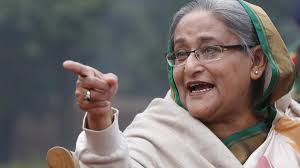
- 19 Sep 2024
In News:
The chief prosecutor of Bangladesh’s International Crimes Tribunal (ICT), Mohammad Tajul Islam, announced plans to seek the extradition of former Prime Minister Sheikh Hasina from India. The ICT was established in 2010 to investigate crimes committed during the 1971 independence war from Pakistan.
Background on Sheikh Hasina's Exile
Ms. Hasina sought refuge in India in early August after a mass uprising forced her to resign. Following her departure, numerous criminal cases have been filed against her and her aides, with charges including murder, torture, abduction, crimes against humanity, and genocide. The interim government in Dhaka has revoked her diplomatic passport, and the existing bilateral extradition treaty between India and Bangladesh may allow for her return to face trial.
Extradition Treaty Overview
Key Provisions
- Under the International Crimes (Tribunals) Act of 1973, Bangladeshi courts can proceed with trials in Ms. Hasina’s absence, raising concerns about the fairness and adherence to due process. Thus, her extradition is deemed crucial.
- The extradition treaty between India and Bangladesh was executed in 2013 and amended in 2016 to facilitate the exchange of fugitives. The treaty has allowed the transfer of several political prisoners, including two involved in the 1975 assassination of Sheikh Mujibur Rahman, Ms. Hasina’s father, and Anup Chetia, the former general secretary of the banned United Liberation Front of Assam (ULFA).
Extradition Conditions
- The treaty mandates the extradition of individuals charged with crimes punishable by at least one year’s imprisonment. It follows the principle of dual criminality, meaning the offense must be punishable in both countries. Since the charges against Ms. Hasina are prosecutable in India, she qualifies for extradition. The treaty also covers attempts to commit crimes and complicity in such offenses.
- The 2016 amendment significantly lowered the evidentiary threshold for extradition, requiring only an arrest warrant from a competent court in the requesting country to initiate proceedings.
Grounds for Refusal of Extradition
Political Nature of Offenses
Article 6 of the treaty allows for extradition to be refused if the offense is deemed of a “political nature.” However, many offenses, including murder and terrorism-related crimes, are explicitly excluded from this classification. Given that several charges against Ms. Hasina fall outside this exemption, it is unlikely India could justify denying extradition on these grounds.
Good Faith Clause
Article 8 permits denial of extradition requests if the accusations are not made in good faith or involve military offenses not recognized under general criminal law. India could argue that the charges against Ms. Hasina are politically motivated and may lead to her facing unfair trials or persecution upon her return. Recent reports indicate that some of Ms. Hasina’s former ministers faced violent arrests, raising further concerns about the political climate in Bangladesh.
Potential Implications of Extradition Request
Dr. Sreeradha Datta, a professor of international relations at O.P. Jindal Global University, commented that the treaty does not guarantee Ms. Hasina’s extradition, emphasizing that the final decision will depend on diplomatic negotiations and political factors. Even if India declines the request, it may only serve as a minor political irritant rather than significantly damaging bilateral relations.
Economic Considerations
Bangladesh is India’s largest trade partner in South Asia, with bilateral trade estimated at $15.9 billion for the fiscal year 2022-23. Before Ms. Hasina’s ouster, both countries were set to discuss a comprehensive economic partnership agreement (CEPA) to strengthen economic ties. Following the regime change in Dhaka, Indian Prime Minister Narendra Modi has engaged with Chief Adviser Muhammad Yunus of the interim government, pledging continued support for ongoing development projects.
Financing Sustainable Agriculture: Insights from the RBI
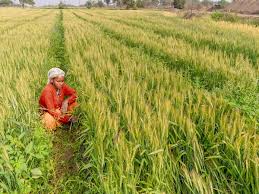
- 18 Sep 2024
Context
At the International Research Conference, the Deputy Governor of the Reserve Bank of India (RBI) addressed the crucial topic of financing sustainable agriculture, emphasizing the need for effective solutions.
What is Sustainable Agriculture?
Sustainable agriculture involves farming practices that meet current food demands while conserving resources for future generations. This approach aims to:
- Protect the environment
- Reduce reliance on chemical inputs
- Efficiently use water and land
The goal is to balance productivity, environmental health, and socio-economic equity.
Benefits of Sustainable Agriculture
- Environmental Conservation: Promotes biodiversity, reduces soil degradation, and conserves water.
- Economic Stability: Lowers dependence on costly chemical inputs, improving farmers’ profitability.
- Improved Food Security: Enhances soil health and crop diversity, ensuring resilience against climate change.
- Social Equity: Farmer Producer Organizations (FPOs) empower small and marginal farmers by providing access to technology, markets, and financial resources, enhancing their bargaining power.
Challenges Facing Sustainable Agriculture
- Low Productivity: Small, fragmented landholdings hinder investment in sustainable practices and mechanization.
- Dependence on Rainfall: Approximately 60% of Indian agriculture is rain-fed, making farmers vulnerable to climate variability.
- Price Volatility: Fluctuating prices force farmers to sell at low prices during peak harvests, while limited processing capacity leads to post-harvest losses.
- Access to Finance: Small farmers struggle to obtain credit, as the formal banking system often favors larger agribusinesses.
Initiatives for Sustainable Agriculture
- Farmer Producer Organizations (FPOs): Over 24,000 FPOs formed by March 2023 enhance farmers’ access to resources and markets.
- Warehouse Receipt Financing: This model allows farmers to store produce and sell when prices are favorable, stabilizing commodity prices.
- Priority Sector Lending (PSL): RBI regulations enable loans up to ?2 crore for agricultural activities, with higher limits for FPOs involved in assured marketing.
- Climate-Smart Agriculture (CSA): India is adopting practices such as drought-resistant crops and advanced water management.
- Technology Integration and Mechanization: Initiatives like the “Per Drop More Crop” scheme promote efficient water use, while Custom Hiring Centres (CHCs) enhance mechanization, reducing labor costs.
How do emergency provisions impact Centre-State relations?
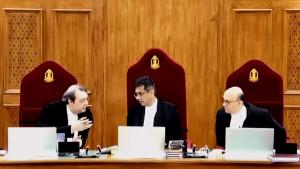
- 17 Sep 2024
In News:
The recent spate of renewed violence in Manipur has once again triggered the discussion around Centre-State relations and the use of emergency provisions by the Centre.
What is our federal set-up?
India is a federation with governments at the Centre and the States. The Seventh Schedule to the Indian Constitution distributes the power between the Union and States. Under this scheme, it is the domain of the State governments to maintain law and order in their respective States.
What are emergency provisions?
The emergency provisions are provided in Part XVIII of the Constitution. Articles 355 and 356 deal primarily with the affairs of government in a State under this part.
Article 355 imposes a duty on the Centre to protect every State from external aggression and internal disturbance. It also specifies that the Centre should ensure that every State government operate according to the Constitution.
Article 356 allows for the imposition of the President’s rule if a State’s government cannot function in accordance with constitutional provisions. While in the U.S. and Australia, federal government functions also involve protecting States, their constitutions do not contain provisions for removing State governments.
B.R. Ambedkar explained the purpose of Article 355, keeping in mind the federal character of our polity, that if the Centre is to interfere in the State’s administration under Article 356, it must be by or under some obligation which the Constitution imposes on the Centre. Hence, Article 355 was incorporated to check any arbitrary or unauthorised use of Article 356.
What have the courts ruled?
Dr. Ambedkar again in the constituent Assembly wished that Articles 355 and 356 would never be called into operation and would remain a dead letter. However, it was a travesty of the Constitutional principles and federalism that Article 356 was misused on several occasions removing elected governments that enjoyed majority in the States. Reasons varied from loss in Lok Sabha elections to deterioration of law and order in the States. It was only after the Supreme Court’s categorical judgement in the S R Bommai case (1994) that such misuse was restricted. The court held that Article 356 should be imposed only in the event of a breakdown of constitutional machinery, as distinguished from an ordinary breakdown of law and order. It also held that the imposition of the President’s rule is subject to judicial review and should not be misused for political reasons.
On the other hand, the scope of Article 355 has been widened by various Supreme Court rulings. In State of Rajasthan Vs Union of India (1977), the court had a narrow interpretation of Article 355 as justifying the employment of Article 356. However, in subsequent cases such as Naga People’s Movement of Human Rights Vs Union of India (1998), Sarbananda Sonowal Vs Union of India (2005), and H.S.Jain Vs Union of India (1997), the legal position with respect to Article 355 has shifted. The scope of actions under this article has been widened to permit all statutorily and constitutionally available actions by the Union to discharge its duties of protecting the State and ensuring that its governance is in accordance with the Constitution.
What are the suggestions?
The Sarkaria Commission on Centre-State Relations (1987), the National Commission to Review the Working of the Constitution (2002), and the Punchhi Commission on Centre-State Relations (2010) have all opined that Article 355 not only imposes a duty on the Union but also grants it the power to take necessary actions for the effective performance of that duty. Imposition of the President’s rule under Article 356 must be used as a last resort in situations of utmost gravity and urgency.
The situation in Manipur is grave. Large-scale violence against innocent civilians, women and children; looting of ammunition from police armoury; drone and missile attacks targeting civilians cannot be viewed as just an ordinary breakdown of law and order. Constitutional as well as political expediency, considering that the same party is in power at the Centre and the State, has resulted in Article 356 not being invoked. However, under Article 355, all possible instructions and actions should continue to be pursued to restore normalcy at the earliest.
Preventive Detention
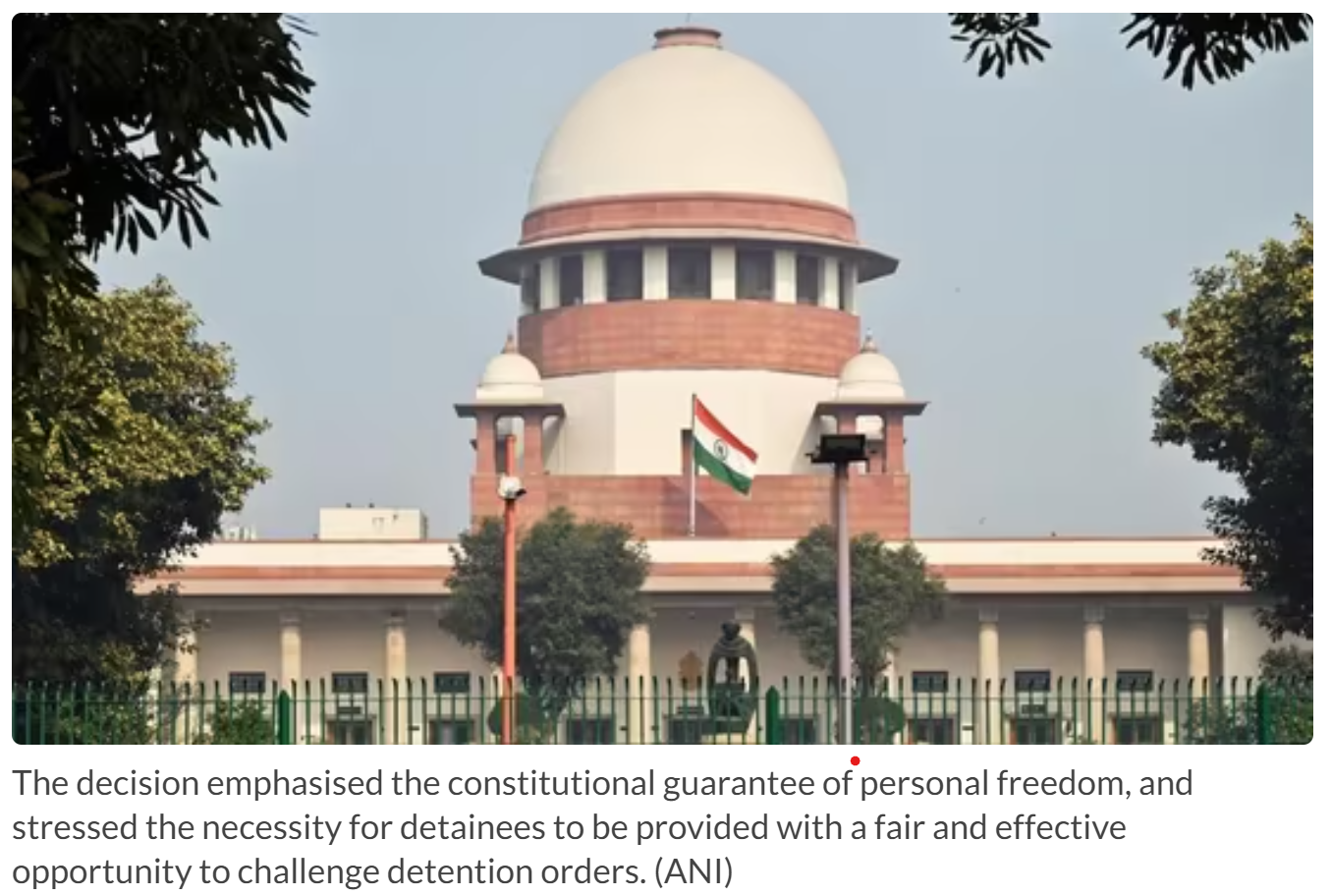
- 16 Sep 2024
In News:
The recent Supreme Court ruling in Jaseela Shaji vs. Union of India (2024) introduces new standards for preventive detention in India, aiming to strengthen safeguards for individual liberty.
Key Aspects of the Ruling
- Strict Standards for Preventive Detention:
- The Court emphasized the need for authorities to furnish all essential materials relied upon in detention orders to the detainee.
- This includes providing documents in a language the detainee understands to ensure fair representation.
- Constitutional Guarantees:
- The ruling reinforced the constitutional right to personal liberty and the need for a fair process in preventive detention cases, as guaranteed under Article 22(5) of the Constitution.
- The Court asserted that individual freedom is paramount and cannot be curtailed without adherence to due process.
- Importance of Timely Representation:
- The Court criticized the significant delays in handling and deciding the detainee's representation.
- Authorities are mandated to act with “utmost expedition” in processing and deciding representations related to personal liberty.
- Case-Specific Findings:
- In the case of Appisseril Kochu Mohammed Shaji, the Court found that critical documents and witness statements were not provided to him, nor were translations of important documents made available in his native language, Malayalam.
- The delay in handling Shaji’s representation was deemed “callous and casual,” impacting his right to challenge his detention effectively.
- Criticism of Procedural Lapses:
- The Court overturned the Kerala High Court's decision, finding that procedural lapses, including the failure to provide key documents and delays in processing representations, violated Shaji’s constitutional rights.
- The Supreme Court highlighted the necessity for detaining authorities to avoid arbitrary actions and ensure the detainee’s rights are respected throughout the process.
Implications
This ruling has significant implications for preventive detention practices:
- Enhanced Accountability: Authorities must now ensure meticulous compliance with procedural requirements to avoid legal challenges.
- Stronger Protections for Detainees: The ruling reinforces the need for transparency and fairness in the detention process, potentially impacting future cases involving preventive detention.
- Administrative Efficiency: The Court’s focus on prompt processing of representations underscores the need for administrative efficiency and accountability in handling such matters.
What is Preventive detention?
- Preventive detention refers to the detention of an individual without a trial or conviction by a court. The primary objective of preventive detention is not to punish an individual for a past offence but to prevent them from committing an offence in the future.
- Preventive detention laws are enacted by governments to ensure public safety and maintain social order.
- The detention of an individual under preventive detention cannot exceed three months, as specified by the Indian Constitution's Article 22. However, if an advisory board reports sufficient cause for extended detention, the detention can be extended. The advisory board is an independent body that reviews the case and provides its opinion on whether the detention is necessary.
- Article 22 of the Indian Constitution grants protection to individuals who are arrested or detained. It has two parts—
- The first part deals with cases of ordinary law, which includes situations where an individual is detained as part of a criminal investigation.
- The second part deals with cases of preventive detention law, which pertains to the detention of individuals without a trial or conviction.
Two types of detentions
There are two types of detentions: preventive detention and punitive detention.
- Preventive detention is when someone is held in police custody based on a suspicion that they might commit a crime. The police can make arrests without a warrant in certain cases.
- Punitive detention is when someone is detained as punishment for committing a criminal offence. This type of detention occurs after the offence has been committed or attempted
Preventive Detention Laws in India
- Maintenance of Internal Security Act (MISA), 1971 (repealed in 1978)
- COFEPOSA, 1974
- National Security Act (NSA), 1980
- Terrorist and Disruptive Activities (Prevention) Act (TADA), 1985 (repealed in 1995)
- Prevention of Terrorism Act (POTA), 2002 (repealed in 2004)
- Unlawful Activities (Prevention) Act (UAPA), 1967 (amended several times)
Important Judicial Cases
- Shibban Lal v. State of Uttar Pradesh (1954): Established limited judicial intervention in preventive detention.
- Khudiram v. State of West Bengal (1975): Reaffirmed that the judiciary cannot assess the validity of detention grounds.
- Nand Lal Bajaj v. State of Punjab (1981): Criticized preventive detention laws as inconsistent with parliamentary principles.
- Rekha v. State of Tamil Nadu (2011): Urged limiting preventive detention to avoid violating fundamental rights.
- Mariappan v. District Collector (2014): Stressed preventive detention should prevent harm, not punish.
- Prem Narayan v. Union of India (2019): Highlighted that preventive detention should not be imposed casually.
- Abhayraj Gupta v. Superintendent, Central Jail (2021): Stressed that preventive detention should not duplicate existing detention.
The Shock of Crumbling Infrastructure and the Path Forward
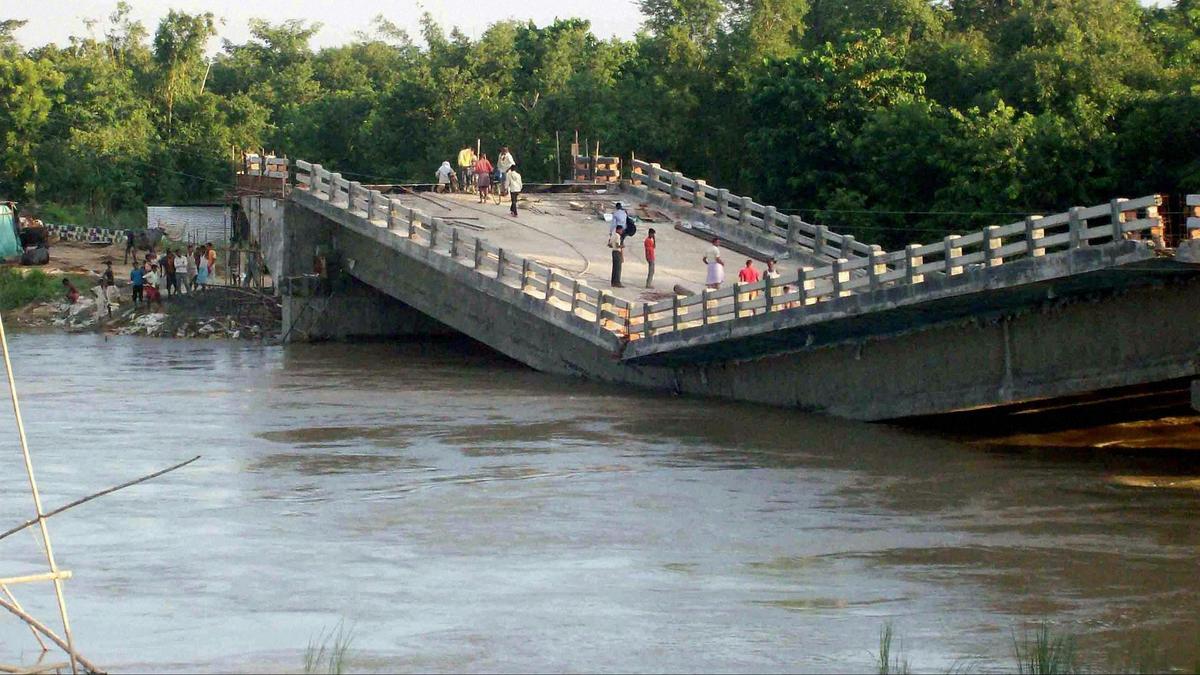
- 15 Sep 2024
Infrastructure is a cornerstone of economic development, and in a rapidly growing economy like India’s, its robustness is vital. Recent incidents, particularly the collapse of several under-construction bridges in Bihar, have cast a spotlight on significant issues within the Indian infrastructure sector, particularly in terms of quality control and project management. With the country's aim to become a developed nation by 2047, addressing these challenges is crucial for sustaining economic growth and ensuring safety.
Current Challenges
- Cost Overruns and Delays: One of the most pressing issues is the frequent occurrence of cost overruns and delays. According to a report by the Ministry of Statistics and Programme Implementation, 431 infrastructure projects with investments exceeding ?150 crore each have faced cost overruns totaling ?4.82 lakh crore as of December 2023. Additionally, a significant percentage of projects are delayed, with 36% running behind schedule by 25 to 60 months and 15% delayed for over 60 months.
- Bureaucratic Hurdles: Infrastructure projects often face delays due to the complex maze of clearances required. The implementation status of many projects indicates a lack of comprehensive planning and coordination, especially in urban infrastructure projects managed by local bodies that may lack sufficient capacity and expertise.
- Project Management Deficiencies: Traditional project management practices in India are often outdated. There is a need for an overhaul to incorporate modern tools and techniques for real-time data management and analysis. Insufficient attention during the planning stages of projects exacerbates these issues, leading to increased costs and project failures.
Path Forward
1. Integrating Modern Practices: Adopting modern project management practices is essential. This includes real-time data management, use of advanced analytics, and adopting global best standards. For example, in the United Kingdom, the Infrastructure and Projects Authority focuses on refining project processes, while countries like China and Saudi Arabia have established agencies dedicated to end-to-end project delivery.
2. PM Gati Shakti National Master Plan: India has initiated the PM Gati Shakti National Master Plan, aimed at integrating various government departments and stakeholders into a unified platform. This GIS-based ERP portal is designed to monitor real-time progress and enhance coordination among departments. While this initiative is promising, the effectiveness will depend on the quality of implementation and oversight.
3. Holistic Program Management Approach: The “Program Management Approach” used in industrial corridor development projects, like the Shendra-Bidkin in Aurangabad, exemplifies effective management of multiple projects simultaneously. This disciplined approach, involving systematic coordination of resources and information, can be applied more broadly across infrastructure projects.
4. Professional Training and Certification: To build a capable workforce, there is a need to establish agencies for professional training in project management. Similar to the Institute of Chartered Accountants of India, such agencies can focus on developing professional ethics and responsibilities in project execution and oversight.
Conclusion
With substantial taxpayer money allocated for infrastructure development, it is imperative to prevent the pitfalls of cost overruns and project failures. A robust program management system, incorporating modern practices and professional training, will enhance the efficiency and effectiveness of infrastructure projects. This approach will not only support India’s high-growth trajectory but also contribute to creating a safer, more affluent future for its citizens.
The Path to Universal Health Coverage: Embracing Data and Digital Technology
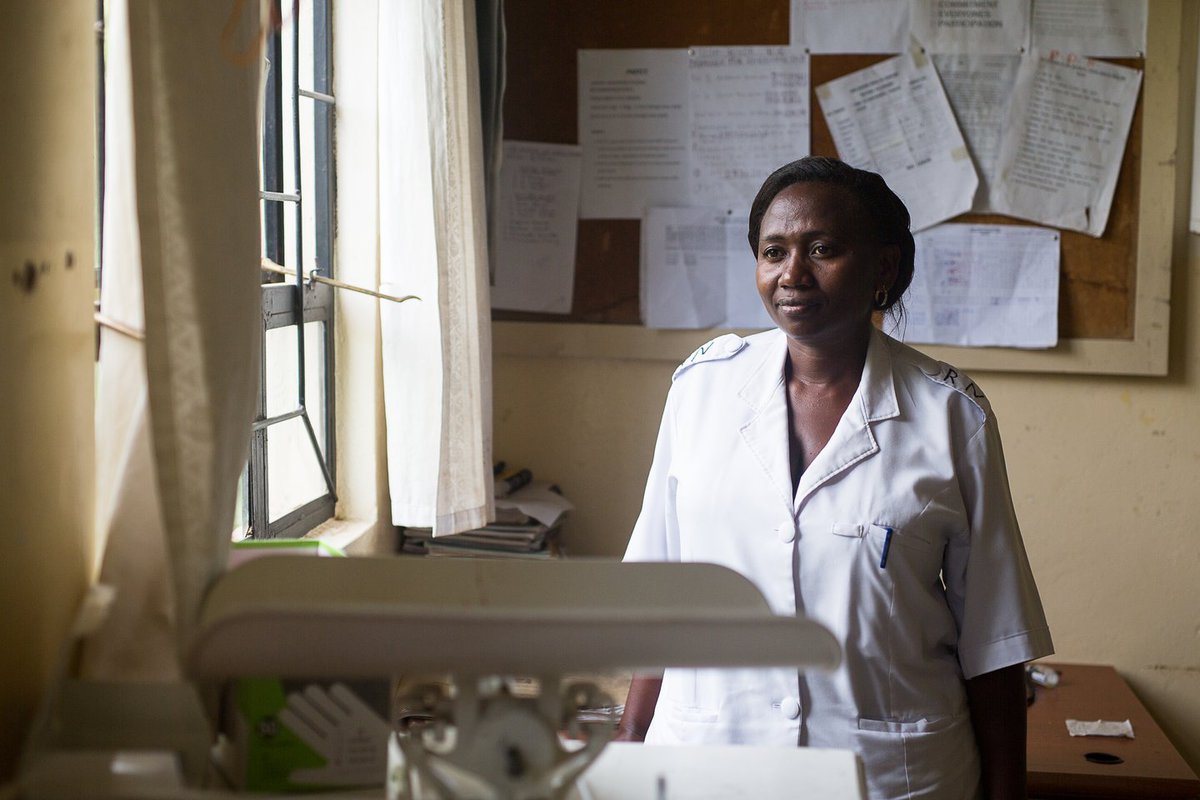
- 13 Sep 2024
The expansion of Universal Health Coverage (UHC) represents a complex but crucial endeavor. The integration of data and digital technology stands out as a pivotal factor in smoothing the way towards achieving this goal.
Understanding Universal Health Coverage
Universal Health Coverage means ensuring that every individual has access to the full spectrum of quality health services when and where they need them, without facing financial hardship. This concept encompasses a broad range of essential health services, including health promotion, prevention, treatment, rehabilitation, and palliative care throughout an individual's life.
UHC as a Sustainable Development Goal
Achieving UHC is a key target of the Sustainable Development Goals (SDGs) established by the global community in 2015. However, despite this commitment, progress towards this goal remains off-track. Since 2015, improvements in health services coverage have stalled, and the proportion of people facing catastrophic out-of-pocket health expenses has been rising steadily since 2000.
Challenges to Universal Health Coverage
Several challenges hinder the advancement of UHC:
- Global Stagnation: Progress in health coverage has stagnated globally, affecting regions and countries alike.
- Manpower Shortages: Many Western and Central Asian countries face severe healthcare manpower shortages.
- Pandemic Disruptions: The COVID-19 pandemic has further disrupted essential health services, with 92% of countries experiencing interruptions at the pandemic's peak in 2021, and 84% still reporting disruptions in 2022.
- Inequality in Healthcare Spending: The disparity between poor and non-poor households has widened, with lower-income families often forced to deplete their resources or sell assets to cover healthcare costs. According to the WHO, 55 million people fall into poverty annually due to catastrophic health expenditures.
- Insufficient Spending: India’s healthcare spending, currently at 3.2% of its GDP, is lower than the average spending of 5.2% observed in lower and middle-income countries (LMICs). The government’s health expenditure is also lower compared to other countries like China, Thailand, Vietnam, and Sri Lanka.
Opportunities Through Digital Health
To address these challenges, leveraging digital health solutions is critical. India's leadership in digital health is exemplified by the Global Initiative on Digital Health, launched under India’s G20 presidency. This initiative aims to drive investments into digital health and facilitate regional and international collaboration.
India’s Ayushman Bharat Digital Mission, which precedes this global initiative, highlights the country's commitment to using digital technology to manage the complexities of UHC expansion. Digital health tools can play a transformative role in managing contracts, implementing value-based provider reimbursements, and streamlining healthcare delivery.
The Role of Artificial Intelligence
Artificial Intelligence (AI) holds significant promise for revolutionizing healthcare. AI-powered diagnostic tools can improve the accuracy and speed of medical diagnoses, leading to better patient outcomes. AI can also predict disease outbreaks, analyze healthcare data, optimize treatment plans, and enhance drug discovery, making healthcare more personalized and effective.
Building Digital Infrastructure
India’s experience in expanding digital health infrastructure can serve as a model for other low- and middle-income countries. Many of these nations are seeking to build and enhance their healthcare systems, and India’s approach may offer valuable policy insights.
The Need for Private Sector Participation
Achieving UHC in India cannot rely solely on the public sector. Integrating the private sector into the public healthcare framework is essential. Addressing modern health challenges requires a collaborative effort that includes both public and private sectors, creating a multifaceted and synergistic approach to healthcare.
WHO’s Recommendations
To strengthen health systems, the WHO recommends reorienting them with a primary health care (PHC) approach. Implementing PHC can deliver up to 90% of essential UHC interventions, potentially saving 60 million lives and increasing global life expectancy by 3.7 years by 2030.
Looking Ahead
It is crucial to balance national interests with international ambitions and leverage digital technologies to create inclusive solutions. Countries should build on their existing systems, gradually implementing reforms and best practices. With dedicated effort and a commitment to excellence, it is possible to build a healthier and more prosperous future for generations to come.
Port Blair renamed as Sri Vijaya Puram
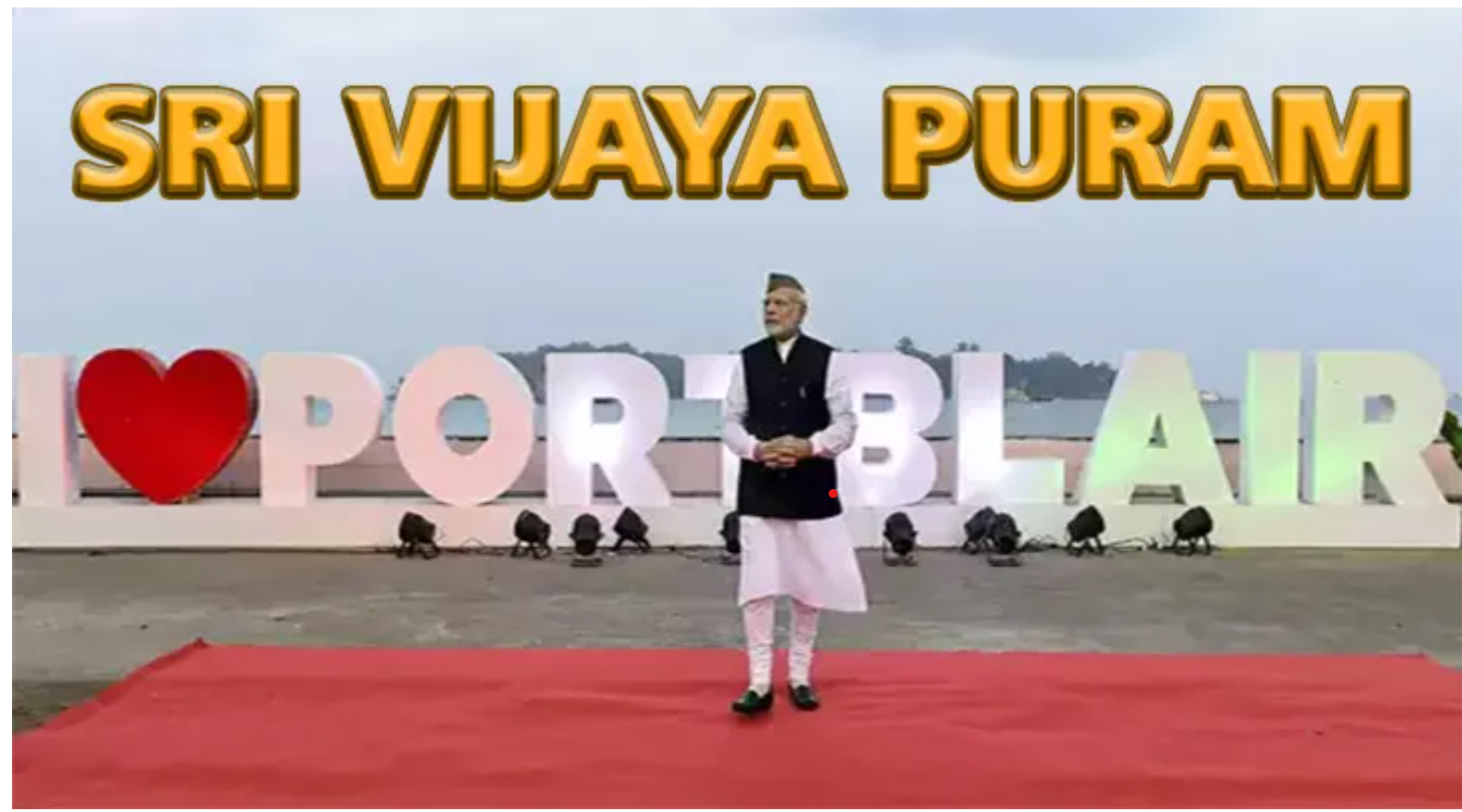
- 14 Sep 2024
Port Blair to be Renamed Sri Vijaya Puram: A Move to Erase Colonial Echoes
Union Home Minister Amit Shah announced on Friday that Port Blair, the capital city of the Andaman and Nicobar Islands, will be renamed Sri Vijaya Puram. This decision is part of a broader effort to “free the nation from colonial imprints,” Shah explained. In a post on X, he emphasized that while the current name carries colonial connotations, the new name, Sri Vijaya Puram, represents the triumph of India's freedom struggle and acknowledges the Andaman & Nicobar Islands’ pivotal role in that struggle.
Shah further highlighted the strategic importance of the islands, which historically served as a naval base for the Chola Empire and are now envisioned as a key element in India’s strategic and developmental plans. Port Blair, named after British naval surveyor Archibald Blair, will henceforth be known as Sri Vijaya Puram, aligning with Prime Minister Narendra Modi’s vision to remove colonial legacies.
The Origin of Port Blair’s Name
Port Blair, the gateway to the Andaman and Nicobar Islands, was named after Archibald Blair, a lieutenant in the Bombay Marine. Blair conducted a thorough survey of the islands after joining the Bombay Marine in 1771. His expedition, which began in December 1778, was crucial in mapping the Andaman Islands. Initially, Blair named the natural harbor Port Cornwallis, in honor of Commodore William Cornwallis. Later, the harbor was renamed Port Blair.
Blair’s survey was highly valued by the East India Company (EIC), leading to the islands’ colonization. The primary motivation was to create a secure harbor to monitor Malay pirates and provide refuge for shipwrecked individuals. Over time, the islands were established as a penal colony, receiving numerous convicts who performed forced labor.
In 1792, the EIC relocated the colony to Port Cornwallis, but it was soon abandoned due to disease and high mortality rates. The Revolt of 1857 brought an influx of prisoners, leading to the reestablishment of Port Blair as a penal colony. The harsh conditions led to numerous deaths, and the area became notorious for its brutal treatment of prisoners, including freedom fighters like Veer Damodar Savarkar. The infamous Cellular Jail, or Kaala Paani, was built by 1906 to house political prisoners.
Historical Significance of the Andaman Islands
Historical records indicate that the Andaman Islands were strategically significant during the 11th century, particularly for the Chola Empire under Emperor Rajendra I. The islands were used as a naval base in the Chola campaign against Srivijaya, a kingdom in present-day Indonesia. An inscription from Thanjavur dating to 1050 CE refers to the islands as Ma-Nakkavaram land, which may have influenced the modern name Nicobar.
Historian Herman Kulke, in his book "Nagapattinam to Suvarnadwipa," describes the Chola invasion of Srivijaya as a notable event, reflecting the complex interactions between India and Southeast Asia. Various scholars offer differing interpretations of the invasion, ranging from a response to trade disruptions to an extension of Chola expansionism.
In summary, the renaming of Port Blair to Sri Vijaya Puram represents a significant shift in recognizing the historical and strategic importance of the Andaman and Nicobar Islands, aligning with India's broader goals of addressing colonial legacies and honoring its rich history.
India’s sickle cell challenge
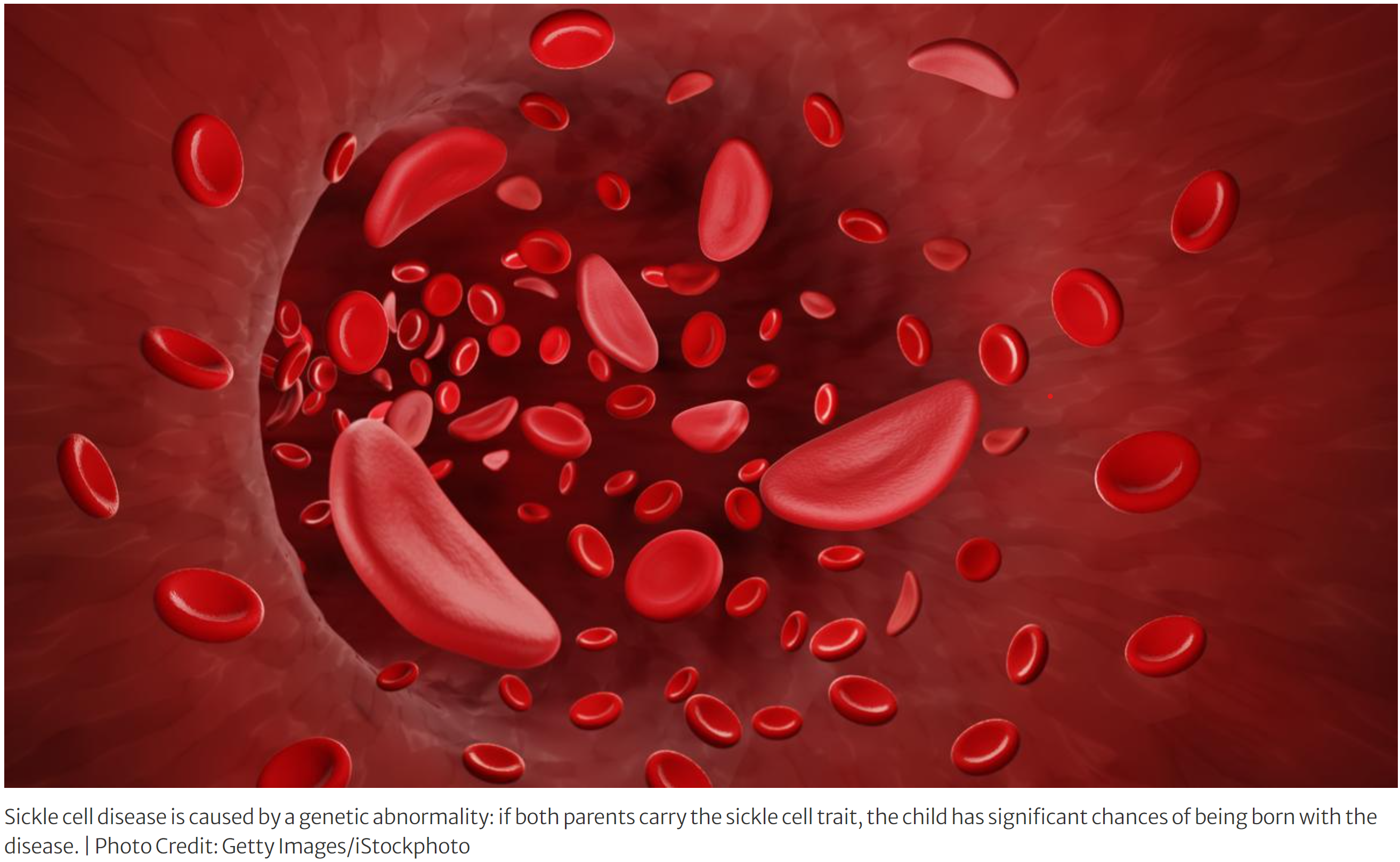
- 12 Sep 2024
In News:
Last year, Prime Minister Narendra Modi launched the National Sickle Cell Anaemia Elimination Mission to eliminate sickle cell disease as a public health problem by 2047, from Shahdol, Madhya Pradesh.
What is Sickle Cell Disease?
- It is a genetic blood disorder that affects the shape of red blood cells. Normally, red blood cells are round and flexible, but in sickle cell disease, they become stiff and crescent-shaped, resembling a sickle.
- This abnormal shape makes it difficult for these cells to travel smoothly through blood vessels, leading to blockages and various health problems.
- It is caused by a mutation in the gene that tells the body how to make hemoglobin, the protein in red blood cells that carries oxygen.
- Both parents must pass down the defective gene for a child to develop the disease.
- If a person inherits the gene from just one parent, they have sickle cell trait and can pass the gene to their children but usually do not experience symptoms.
- Symptoms:
- Episodes of severe pain, called pain crises, typically in the chest, joints, and bones.
- Fatigue and anemia, due to the rapid breakdown of red blood cells.
- Swelling in the hands and feet, caused by the sickle-shaped cells blocking blood flow.
- Frequent infections, as the spleen, which helps fight infection, may be damaged by the disease.
- Delayed growth and puberty in children, due to chronic anemia.
- Diagnosis:
- It is usually diagnosed through a blood test. Newborns are routinely screened for the disease in many countries.
- The test checks for the presence of hemoglobin S, the defective form of hemoglobin that causes sickle cell disease.
- Treatment:
- While there is no universal cure for sickle cell disease, treatments can help manage symptoms and reduce complications.
- Pain relief medications for pain crises.
- Blood transfusions to treat anemia and prevent stroke.
- Hydroxyurea, a medication that can reduce the frequency of pain crises and the need for blood transfusions.
- Bone marrow or stem cell transplants, which can potentially cure the disease but are not suitable for all patients due to risks and availability of donors.
- Challenges in India
- India, with over a million affected individuals, faces the world’s second largest burden of sickle cell disease, primarily affecting tribal regions across Odisha, Jharkhand, Chhattisgarh, Madhya Pradesh, and Maharashtra. Only 18% of those affected receive consistent treatment due to significant drop-offs at diagnosis and adherence stages. Diagnosis is hindered by stigma and reliance on traditional healers, with a lack of trust in the public healthcare system. Treatment adherence is also poor due to the absence of a permanent cure, inadequate supply of essential medications like hydroxyurea, and logistical challenges, including long travel distances for medicine. Additionally, vaccination coverage, which helps improve patients' quality of life, remains insufficient.
The way ahead
- It is important to reduce the stigma related to the disease and build trust in public health institutions. Awareness should be raised through targeted media campaigns to bust specific myths (which vary by region and tribe).
- Second, given that cases are often missed and diagnosis delayed, there could be increasing screening for newborns. This strategy is low-cost with a high pay-off and would especially be effective in areas where the condition is endemic.
- Third, drugs as well as adherence support must be available close to patients, in the nearest health and wellness centres. For complications, interdisciplinary centres of excellence at the district/division levels should be made operational.
- Fourth, ensuring that all known patients receive approved vaccines will be crucial; this may require catch-up vaccination programmes.
- Fifth, health in tribal areas should be operationally strengthened by factoring in conditions unique to these areas. Healthcare should also be adequately funded.
- Finally, research should be conducted to better understand the disease and its pathways in India, and to develop new treatments. Philanthropists and members of civil society must play a catalytic role, and work with the Central and State governments.
India’s Approach to the Russia-Ukraine Conflict and Economic Ties
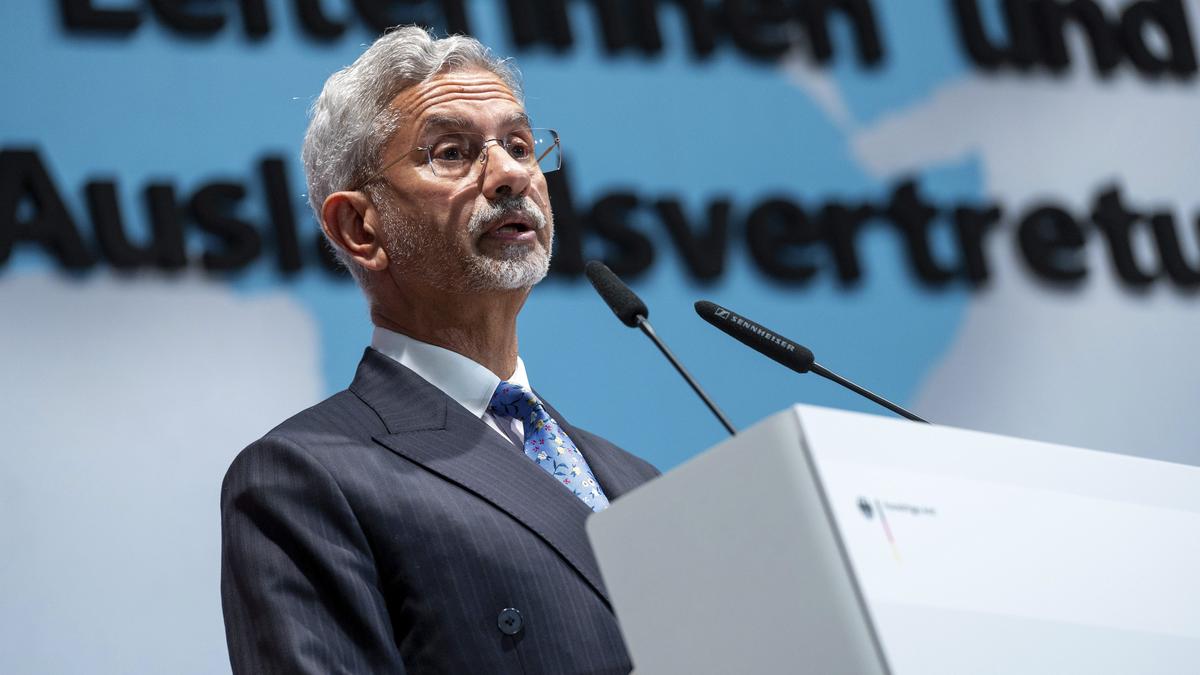
- 11 Sep 2024
India’s Four-Point Principle on the Russia-Ukraine Conflict
- Principles for Resolution: External Affairs Minister S. Jaishankar outlined India's four key principles regarding the Russia-Ukraine conflict:
- Peace as a Priority: Emphasis on the need for peace and the belief that the conflict cannot be resolved through continued warfare.
- Negotiation Requirement: Asserted that any resolution must involve Russia in the dialogue process.
- No Battlefield Solutions: Stressed that solutions cannot be achieved on the battlefield.
- Active Engagement: India is actively engaged and concerned about finding a resolution, with ongoing discussions with both Russia and Ukraine.
- Hosting Peace Conference: Jaishankar noted that while suggestions for India to host a peace conference have been made, there is no commitment from India to propose or host such a conference.
- Recent Diplomacy: Referenced Prime Minister Narendra Modi’s visits to Moscow and Kyiv and highlighted National Security Adviser Ajit Doval's current visit to Russia.
Diplomatic Discussions with Germany
- Bilateral Meeting: Jaishankar met with German Foreign Minister Annalena Baerbock in Berlin to prepare for German Chancellor Olaf Scholz’s visit to New Delhi on October 24-25.
- Topics of Discussion:
- Global Issues: Discussed the Russia-Ukraine conflict, the Gaza conflict, and coordination for the UN Summit of the Future.
- UN Security Council Expansion: India and Germany are jointly advocating for the expansion of the UN Security Council.
- Ongoing Engagement: Both ministers will reconvene later this month at the UN General Assembly.
India-Germany Relations
- Germany’s Role: Baerbock acknowledged ongoing discussions with India and other countries about their roles in peace efforts, despite differing positions on the Russia-Ukraine conflict.
- Economic and Trade Relations:
- Migration and Mobility: Plans to enhance the India-Germany migration and mobility partnership, aiming to increase the number of skilled Indian workers in Germany. Currently, 125,000 Indian nationals work and 50,000 students study in Germany.
- Military Cooperation: Discussed expanding military partnerships, including joint air force exercises and upcoming naval exercises in Goa.
- Trade and Investment: Efforts to boost annual bilateral trade to $30 billion and attract about $25 billion in investment from Germany. New Delhi will host the Asia Pacific Conference of German Business next month.
Economic Ties with China
- Business Relations: Jaishankar addressed concerns about economic ties with China amidst a four-year military stand-off and related restrictions.
- Business Sectors: India is open to Chinese business but emphasizes the need for clarity on sectors and business terms.
Summary
India’s approach to the Russia-Ukraine conflict emphasizes peace, negotiation, and active engagement. Diplomatic efforts with Germany focus on global issues, military cooperation, and economic growth. Jaishankar also highlighted a nuanced stance on economic ties with China amid ongoing tensions.
Arctic Sea Ice Changes May Alter India's Monsoon Patterns
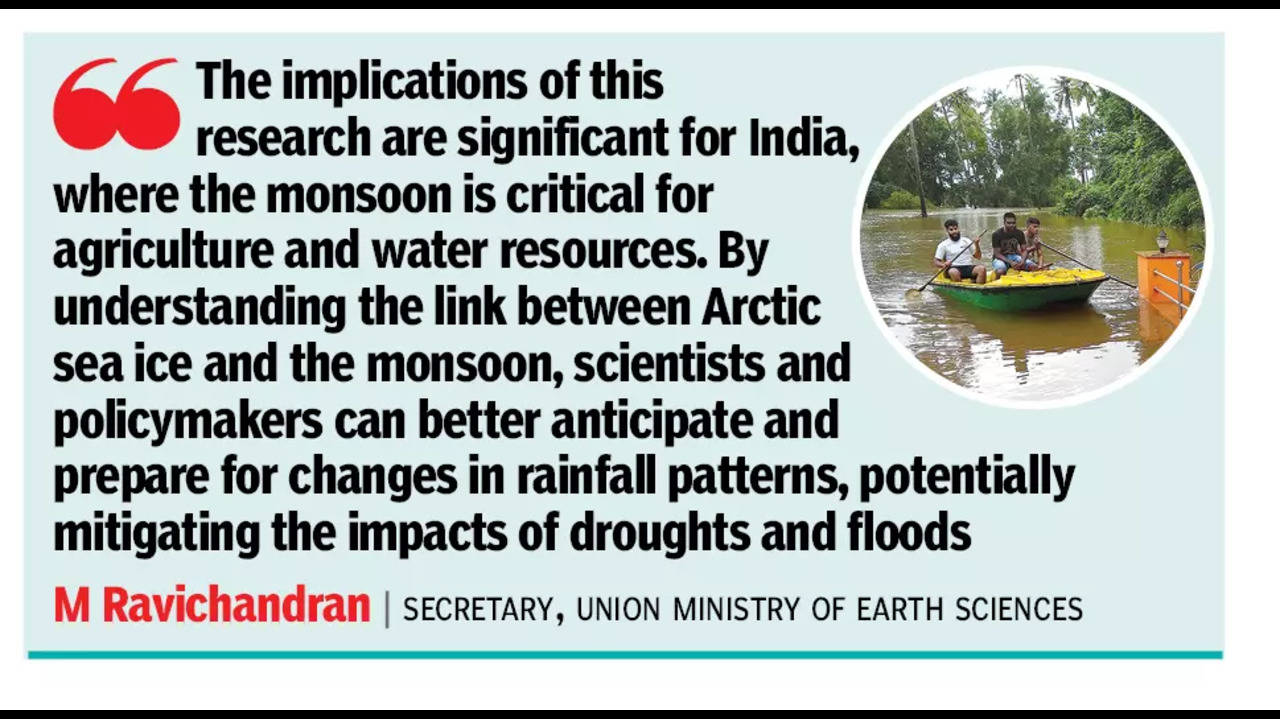
- 09 Sep 2024
In News:
A study by researchers from India’s National Centre for Polar and Ocean Research (NCPOR) has found that seasonal variations in Arctic Sea ice are impacting the Indian monsoon.
What is the Indian Summer Monsoon Rainfall?
The Indian Summer Monsoon Rainfall (ISMR), occurring from July to September, is one of the most significant monsoon systems globally. During the summer, the Central Asian and Indian landmasses heat up more quickly than the surrounding oceans. This temperature difference creates a low-pressure zone at the Tropic of Cancer known as the intertropical convergence zone (ITCZ). Trade winds from the southeast are then deflected toward the Indian subcontinent due to the Coriolis effect and the low pressure they encounter after crossing the equator. As these winds pass over the Arabian Sea, they pick up moisture and bring rain to India. The southwest monsoon divides into two branches over the Indian landmass. The Arabian Sea branch delivers rain to the west coast, while the Bay of Bengal branch brings rain to the eastern and northeastern parts of India. These branches converge over Punjab and Himachal Pradesh, with the Arabian Sea branch moving inward and the Bay of Bengal branch following the Himalayas.
Complexity of the Indian Summer Monsoon Rainfall
Recent climate models have revealed that the ISMR is influenced by the surface temperatures of the Indian, Atlantic, and Pacific Oceans. Additionally, the circum-global teleconnection (CGT), a large-scale atmospheric wave at mid-latitudes, also plays a significant role in affecting the monsoon.
Influence of Arctic Sea Ice on the Indian Monsoon
The study indicates that reduced sea ice in the central Arctic results in decreased rainfall in western and peninsular India, but increased rainfall in central and northern India. Conversely, lower sea ice levels in the upper latitudes, especially in the Barents-Kara Sea region, delay the onset of the monsoon and make it more unpredictable.
Other Atmospheric Systems Influencing the Pattern
When sea ice levels in the central Arctic rise, the heat transferred from the ocean to the atmosphere triggers cyclonic circulation at lower latitudes, such as the North Atlantic. This process enhances Rossby waves—fast-moving air currents created by Earth's rotation and temperature differences—which move from west to east. These waves cause high pressure over northwest India and low pressure over the Mediterranean region, strengthening the Asian jet stream over the Caspian Sea and shifting the subtropical easterly jet northward. This shift leads to increased rainfall in western and peninsular India. On the other hand, decreased sea ice in the Barents-Kara Sea generates an anticyclonic circulation (clear skies) over northwest Europe. This disturbance affects the upper atmosphere over subtropical Asia and India, resulting in increased rainfall in northeastern India while leaving central and northwest regions drier.
Role of Climate Change
Climate change accelerates the reduction of Arctic sea ice, which intensifies the variability and unpredictability of the ISMR. Lower Arctic sea ice contributes to more frequent and severe droughts in some areas, while causing excessive rainfall and flooding in others. The study underscores the urgent need for expanded research on climate dynamics and more accurate monsoon forecasts to address these changing patterns.
The role of district agro-met offices in supporting farmers
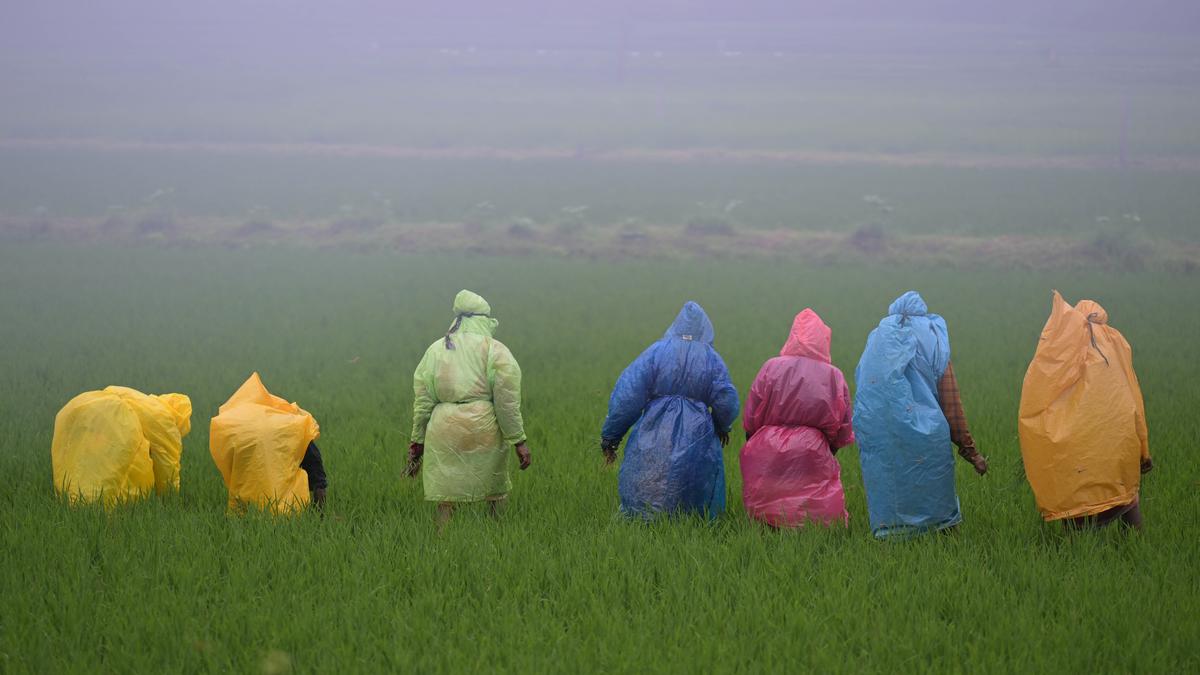
- 10 Sep 2024
In News:
- Last week, PTI reported that the India Meteorological Department (IMD) is planning to revive District Agro-Meteorology Units (DAMUs) under the Gramin Krishi Mausam Sewa (GKMS) scheme.
Background:
- The IMD established 199 DAMUs in 2018 in collaboration with the Indian Council of Agricultural Research.
- The aim was to use weather data to prepare and disseminate sub-district level agricultural advisories. In March, DAMUs were shut down following an order issued by the IMD.
Why are agro-met units important?
- Around 80% of farmers in India are small and marginal. They largely practise rain-fed agriculture in the backdrop of a decades-long farm crisis that is now overlaid with climate change-related weather variability.
- The DAMUs were located within Krishi Vigyan Kendras (KVKs). Scientists and researchers trained in meteorology and agriculture were recruited as DAMU staff. They used weather data provided by the IMD like rainfall, temperature and wind speeds to prepare agricultural advisories related to sowing and harvesting, usage of fertilizers and pesticides, irrigation etc.
- These advisories were sent to millions of farmers across the country free-of-cost in local languages twice a week. They were shared via text messages, WhatsApp groups, newspapers and also through in-person communication from DAMU staff and KVK officers.
- Since these advisories provided weather information in advance, they helped farmers plan activities like irrigation. They also served as early warnings for extreme events like droughts and heavy rainfall. Many studies conducted over the years have stressed the benefits of agro-met advisories.
Why were DAMUs shut down?
- According to an Article-14 report, the NITI Aayog misrepresented the role of District Agricultural Management Units (DAMUs) and advocated for their privatization. The report claims that NITI Aayog inaccurately stated that agro-met data was automated, thereby diminishing the role of DAMU staff. In reality, DAMU staff were crucial in creating agricultural advisories based on IMD weather data, which were disseminated to farmers in local languages. NITI Aayog also proposed monetizing these services, contrasting with the current free provision of agro-met information to all farmers.
- A policy brief from the National Institute of Advanced Studies (NIAS), Bangalore, released in August, highlights that localized and accessible advisories from District Agricultural Management Units (DAMUs) have significantly improved farmers' responses to climatic variations in the Kalyana-Karnataka region. This has led to increased yields and incomes. The brief recommends reconsidering the decision to discontinue DAMUs and suggests exploring ways to enhance their effectiveness and presence.
What about private players?
Currently, a few private companies offer weather advisories, but their services are often too costly for small and marginal farmers. Dr. M. N. Thimmegowda, a professor at the University of Agricultural Sciences noted that annual subscriptions can cost ?10,000 per crop, leading to expenses of ?20,000-40,000 for vegetable and cereal growers, and up to ?60,000-80,000 for specialized advisories. Additionally, there is concern that these companies may provide biased recommendations for fertilizers and pesticides, favoring certain brands.
How can biotechnology be harnessed for economic development?
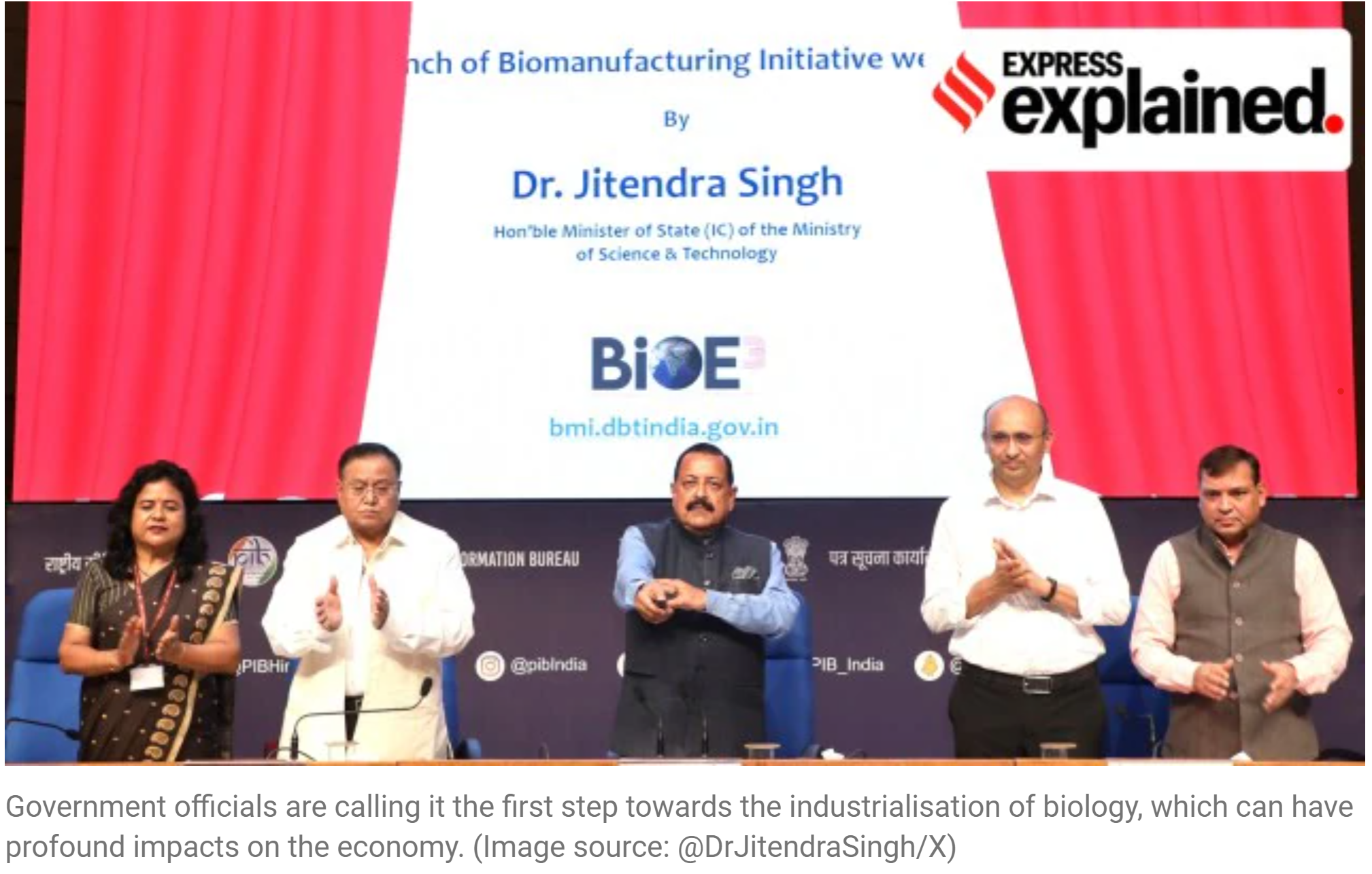
- 04 Sep 2024
The Centre unveiled its BioE3 (Biotechnology for Economy, Environment and Employment) policy last week.
On the face of it, the policy appears to be a routine attempt to create incentives and opportunities to energise growth in the biotech sector. But it is, in fact, about transforming existing industrial and manufacturing processes across various sectors to make them more sustainable and environment-friendly, and less wasteful.
The policy seeks to achieve this by harnessing the power of biotechnology, and developing new manufacturing methods that replicate, or mimic, processes found in natural biological systems.
Potential Benefits of Biotechnology:
- Medical Science:
- Cures for genetic disorders.
- Development of targeted therapies and treatments.
- Agriculture:
- Creation of new plant varieties with desirable traits.
- Increased crop yields and resistance to pests and diseases.
- Environmental Sustainability:
- Bioplastics: Eco-friendly alternatives to traditional plastics (e.g., polylactic acid from corn starch).
- Carbon Capture: Micro-organisms capture and convert CO2 into biofuels, reducing the need for CO2 storage.
- Synthetic Biology:
- Design of novel organisms for specific functions.
- Laboratory-grown organs for transplantation, reducing reliance on organ donors.
- Industrial Processes:
- Replacement of chemical processes with biological ones, reducing pollution.
- Production of sustainable materials and fuels.
BioE3 Policy Benefits for India:
- Economic Impact:
- Expected $2-4 trillion from biomanufacturing over the next decade.
- Prepares India for future economic opportunities in biotechnology.
- Research and Development:
- Promotes competencies, research, and talent development.
- Supports technology development and maturation.
- Biomanufacturing Hubs:
- Establishes facilities for producing bio-products: chemicals, enzymes, functional foods, and more.
- Focus areas: bio-based chemicals, smart proteins, precision therapeutics, climate-resilient agriculture, carbon capture, and marine/space research.
- Future Technologies:
- Supports development of life support systems for space and innovative marine-based products.
- Encourages collaboration among multiple government departments for effective implementation.
State changes in rape law
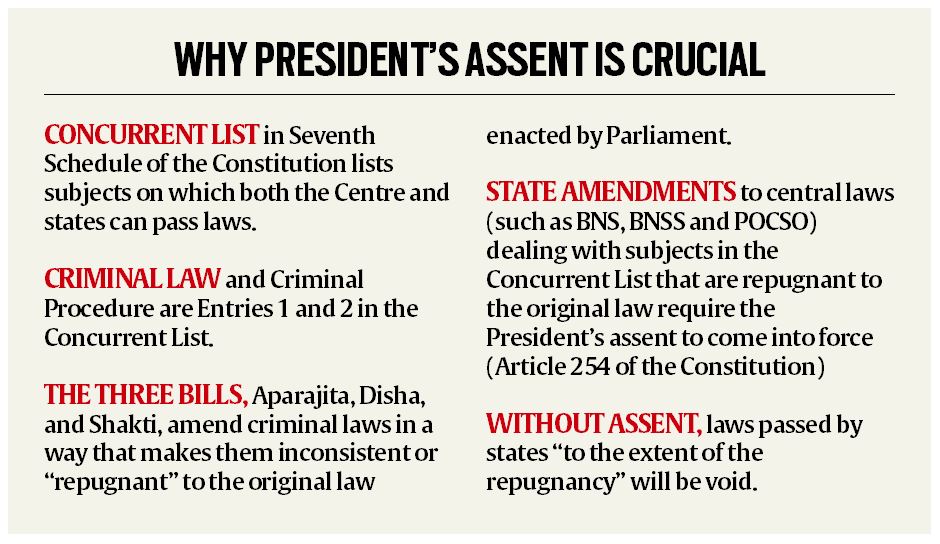
- 05 Sep 2024
The recent legislative changes in rape laws across West Bengal, Andhra Pradesh, and Maharashtra represent significant shifts towards more stringent punishments and expedited judicial processes.
West Bengal: Aparajita Bill
Features:
- Death Penalty: The Bill introduces the death penalty as the mandatory punishment for rape where the victim dies or is left in a permanent vegetative state. It also extends the death penalty to all cases of rape, including gang rape of women above 18.
- Special Institutions: It mandates the creation of Special Task Forces in each district for investigating rape cases, and Special Courts for expedited trials.
- Changes to Existing Laws: The Bill amends the Bharatiya Nyaya Sanhita, Bharatiya Nyaya Suraksha Sanhita, and the Protection of Children Against Sexual Offences Act (POCSO), introducing rigorous imprisonment and increasing penalties for repeat offenders and for disclosing victim identities.
- Acid Attacks: The Bill increases punishment for acid attacks to rigorous imprisonment for life.
Special Provisions:
- Establishes strict timelines for investigation and trial, aiming for efficiency.
- Includes amendments to the POCSO Act to align with the new death penalty provisions.
Andhra Pradesh: Disha Bills
Features:
- Death Penalty: The Disha Act introduces the death penalty for rape, including for minors below 16, gang rape, and repeat offenders.
- Special Courts and Teams: Similar to the Aparajita Bill, it creates Special Police Teams and Exclusive Special Courts in each district to handle these cases.
- Women and Children Offenders Registry: Proposes a registry to track offenders, enhancing transparency and accountability.
Special Provisions:
- Focuses on speeding up the investigation and trial process.
- Proposes comprehensive measures including a registry to maintain offender data, although this may have privacy implications.
Maharashtra: Shakti Bill
Features:
- Death Penalty: The Shakti Bill also introduces the death penalty for rape cases, with an emphasis on “heinous” cases such as acid attacks.
- Shortened Timelines: Like the other bills, it reduces the timeframes for investigations and trials.
- Web Platform Obligations: Imposes penalties on social media and internet platforms for failing to provide data requested by investigators in cases of crimes against women.
Special Provisions:
- Includes specific provisions for acid attacks with potential death penalty in severe cases.
- Addresses the role of web platforms in aiding investigations, reflecting concerns over digital evidence.
Comparative Summary
Death Penalty:
- West Bengal and Andhra Pradesh both introduce the death penalty for various rape offenses, including cases involving minors and gang rapes.
- Maharashtra includes the death penalty but emphasizes "heinous" acid attack cases more explicitly.
Special Institutions:
- All three states create special investigative teams and courts to handle rape cases more swiftly, though the exact mechanisms and timelines differ slightly.
Amendments to Existing Laws:
- West Bengal and Maharashtra both amend the POCSO Act to include the death penalty.
- Andhra Pradesh also makes amendments but with a broader focus on creating a comprehensive registry.
Additional Provisions:
- Maharashtra uniquely addresses the role of web platforms in investigations, an aspect not covered by the other states.
- Andhra Pradesh includes the establishment of an offender registry, which may have broader implications for data privacy and offender tracking.
Council of Europe’s Convention on Artificial Intelligence
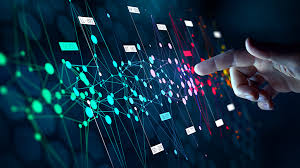
- 06 Sep 2024
- The United States, the European Union, and the United Kingdom are anticipated to sign the Council of Europe’s new convention on artificial intelligence (AI), marking it as the first “legally binding” international treaty on AI.
- The treaty, officially named the Council of Europe Framework Convention on Artificial Intelligence and Human Rights, Democracy and the Rule of Law, was opened for signature during a Council of Europe Ministers of Justice conference in Vilnius, Lithuania.
Purpose and Approach:
- Human Rights Focus:
- The convention prioritizes human rights in regulating both public and private-sector AI systems.
- It seeks to address concerns that fragmented regulations by individual countries could impede the development of AI technology.
- Risk-Based Framework:
- The treaty adopts a risk-based approach to the design, development, use, and decommissioning of AI systems.
- It is applicable to AI systems used across public sectors, including entities acting on behalf of the government, and private sectors, covering multiple geographies.
Key Provisions and Obligations:
- Accountability:
- Signatories are accountable for harmful and discriminatory outcomes resulting from AI systems.
- They must ensure AI outputs respect equality and privacy rights and provide legal recourse for victims of AI-related rights violations.
- Human Rights and Democratic Integrity:
- AI systems must be consistent with obligations to protect human rights.
- They must not undermine democratic institutions, including judicial independence and access to justice.
- Measures must be implemented to safeguard democratic processes, including fair access to public debate and freedom of opinion.
- Exemptions:
- Exemptions include national security and research and development activities.
- Parties are obligated to address risks related to the lifecycle of AI activities by both public and private actors.
International Context:
- Related Agreements:
- The treaty complements other AI regulations and agreements, such as the G7 pact on AI (October 2023), Europe’s AI Act, and the Bletchley Declaration signed by 28 countries (November 2023).
Challenges and Concerns:
- Enforcement Issues:
- Despite being termed “legally binding,” the treaty lacks specific provisions for punitive sanctions like penalties or fines.
- Compliance is primarily monitored, which may not be a strong deterrent for enforcement.
- Initial Approvals:
- Hanne Juncher, Director of Security, Integrity and Rule of Law at the Council, indicated that 10 participants are expected to be among the first to approve the convention.
- This early support reflects the significant investment and satisfaction of these participants in the treaty’s outcome.
Conclusion:
- The Council of Europe’s convention represents a pioneering step towards a globally coordinated approach to AI regulation, emphasizing human rights and democratic principles. However, its effectiveness will depend on the development of robust enforcement mechanisms and broader adoption by key international stakeholders
La Niña Delays and Its Impact on India’s Weather
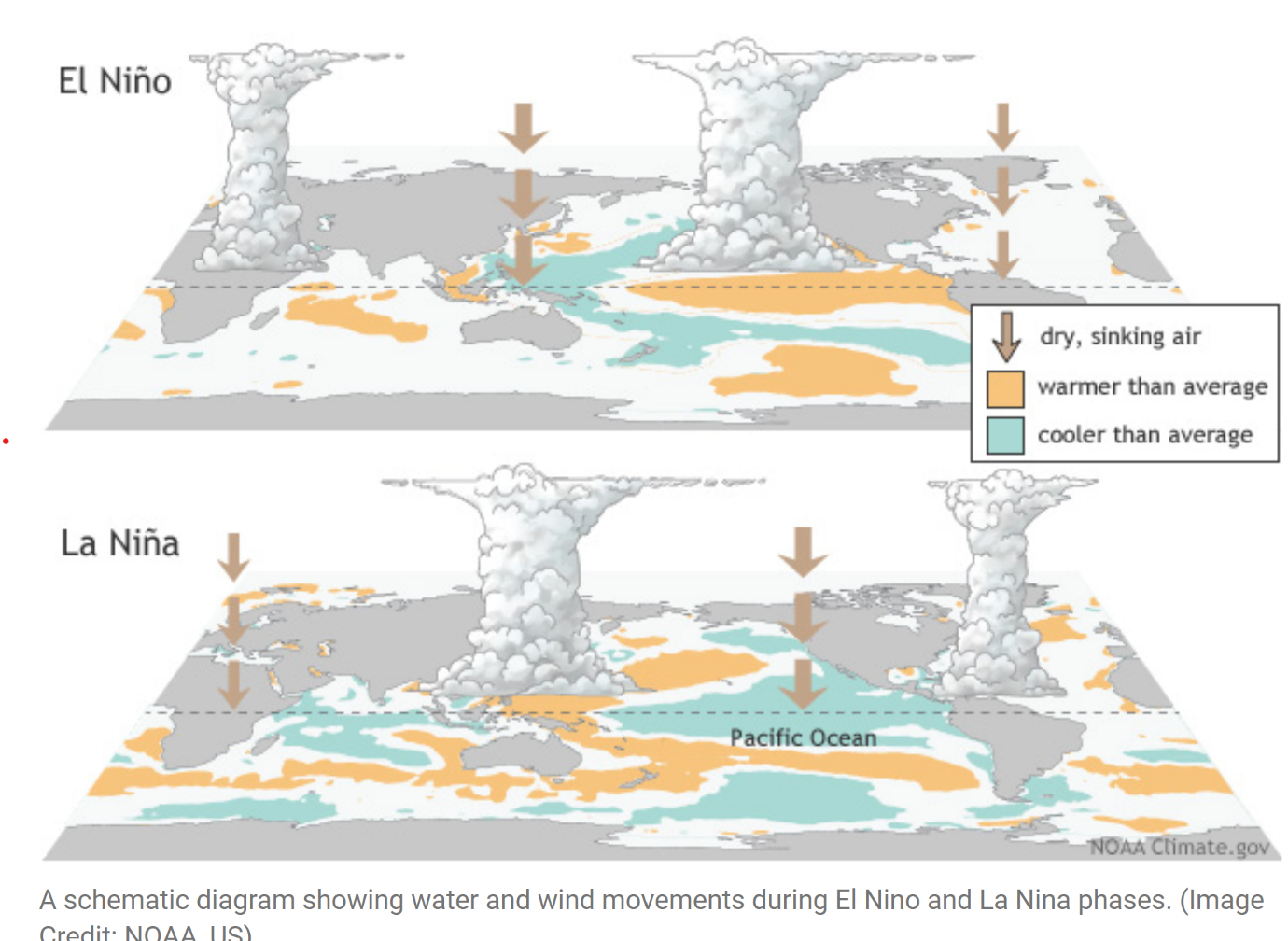
- 07 Sep 2024
- Current Conditions:
- The India Meteorological Department (IMD) reported neutral Indian Ocean Dipole (IOD) conditions.
- La Niña is expected to develop towards the end of the monsoon season, around the end of this month.
- Forecasting Challenges:
- Major global agencies have struggled with accurate forecasts for La Niña’s onset this year.
- Initial predictions suggested La Niña would start around July, but it has been delayed.
- Understanding La Niña:
- La Niña, meaning "The Little Girl" in Spanish, is a phase of the El Niño Southern Oscillation (ENSO).
- ENSO influences global climate through changes in tropical Pacific Ocean sea surface temperatures.
- ENSO phases:
- El Niño (warm phase)
- La Niña (cool phase)
- Neutral
- ENSO Phases Explained:
- Neutral Phase: Eastern Pacific is cooler; trade winds drive warm water westward, causing upwelling of cooler waters.
- El Niño Phase: Weakened trade winds result in warmer eastern Pacific waters.
- La Niña Phase: Strengthened trade winds push more warm water to the western Pacific, cooling the eastern Pacific.
- Impact on India:
- El Niño typically reduces monsoon rainfall; La Niña generally enhances it.
- The previous El Niño occurred from June 2023 to May 2024.
- La Niña episodes can influence severe weather patterns and are linked to higher temperatures, heavy precipitation, and droughts.
- Weather Model Predictions:
- A strong El Niño ended in June, transitioning ENSO to neutral.
- Global models initially forecasted La Niña for July but revised this to August-October.
- IMD’s forecast since April predicted La Niña in the latter half of the monsoon season, aiming for enhanced rainfall in August and September.
- Reasons for Delayed Onset:
- The expected La Niña might be weak, complicating predictions.
- Other atmospheric factors, including the Madden-Julian Oscillation, impact weather models.
- Current and Future Impacts:
- La Niña's first signs are expected by late September or early October.
- It is projected to peak in November and continue through the northern hemisphere winter.
- Monsoon Impact: La Niña’s delayed onset means it won’t significantly affect the current southwest monsoon, though India saw a 16% surplus in August rainfall and a forecast of 109% “above normal” rain for September.
- Potential Effects:
- Northeast Monsoon: La Niña could influence the northeast (winter) monsoon (October-December), impacting Tamil Nadu, coastal Andhra Pradesh, Rayalaseema, south interior Karnataka, and Kerala. While La Niña typically doesn’t favor northeast monsoon rainfall, exceptions have occurred.
- Cyclone Activity: La Niña years often see increased cyclone activity in the north Indian Ocean, with higher intensity and longer-lasting storms.
- Winter Weather: Historically, La Niña years lead to harsher and colder winters, suggesting a potentially severe winter ahead.
India Becomes Leading Plastic Polluter
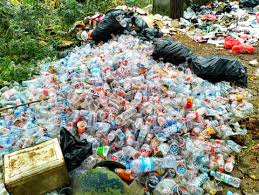
- 08 Sep 2024
India has emerged as the top global plastic polluter, releasing 9.3 million tonnes (Mt) of plastic annually, accounting for nearly 20% of the world's total plastic emissions.
Top Plastic Polluters:
- India: 9.3 Mt
- Nigeria: 3.5 Mt
- Indonesia: 3.4 Mt
- China: Previously first, now fourth, due to improvements in waste management practices such as incineration and controlled landfills.
Understanding Plastic Emissions
Plastic emissions refer to plastic that escapes from managed systems into unmanaged or uncontrolled environments. These emissions can occur throughout the lifecycle of plastic, from production through to disposal.
Intergovernmental Negotiating Committee (INC)
The INC, established by the United Nations Environment Programme (UNEP) in 2022, is working towards creating a global binding treaty on plastic pollution. The committee addresses the entire plastic lifecycle:
- INC Sessions:
- INC-1: Punta del Este, Uruguay (November 2022)
- INC-2: Paris, France (May – June 2023)
- INC-3: Nairobi, Kenya (December 2023)
- INC-4: Ottawa, Canada (2024)
- INC-5: Scheduled for South Korea (November 2024)
Status of Waste Generation in India
- Underreported Waste Generation: Official figures estimate 0.12 kilograms per person per day, which may be higher in reality.
- Excluded Data:
- Waste from rural areas.
- Waste recycled by the informal sector.
- Open burning of uncollected waste.
Global Trends in Plastic Pollution
- Sources of Pollution:
- Global North: Littering is a major contributor.
- Global South: Uncollected waste is the primary source of plastic pollution.
- Top Polluting Countries: 69% of global plastic waste emissions come from 20 countries, mostly low- and middle-income nations.
- High-Income Countries: Although these countries produce more plastic waste, their advanced waste management systems prevent them from being top polluters.
India's Initiatives to Address Plastic Waste
- UNDP India’s Plastic Waste Management Program (2018-2024): Focuses on improving plastic waste management practices.
- Ban on Single-Use Plastics (SUP): Prohibits the manufacture, import, sale, and use of plastic bags thinner than 120 microns.
- Plastic Waste Management Rules (2022): Introduces Extended Producer Responsibility (EPR) for plastic packaging, with targets for recycling, reusing, and using recycled plastic.
- Swachh Bharat Mission: Launched in 2014 to improve waste management and eliminate open defecation.
- India Plastics Pact: Aims to transform the plastic lifecycle.
- Project REPLAN: Focuses on creating carry bags from a blend of plastic waste and cotton fibers.
- Un-Plastic Collective: Promotes a circular economy to reduce unnecessary plastic use and environmental impact.
- GoLitter Partnerships Project: Targets reducing marine plastic litter from fisheries and shipping.
Global Initiatives to Combat Plastic Pollution
- Closing the Loop: A UN Economic and Social Commission for Asia and the Pacific project to develop policies addressing plastic waste.
- Global Tourism Plastics Initiative: Aims to reduce plastic pollution from the tourism sector by 2025.
- EU Single-Use Plastics Directive (2021): Seeks to minimize plastic waste in the environment.
